

What is pro-poor tourism and why is it so great?
Disclaimer: Some posts on Tourism Teacher may contain affiliate links. If you appreciate this content, you can show your support by making a purchase through these links or by buying me a coffee . Thank you for your support!
Pro-poor tourism is a fantastic example of how tourism can be used as a force for good. But what exactly is pro-poor tourism and how does it work? Read on to learn more…
What is pro-poor tourism?
How does pro-poor tourism work, benefits of pro-poor tourism, limitations of pro-poor tourism, ecotourism in laos, the african pro-poor tourism development centre, reality tours & travel, bedouin weaving in israel, ashanti african tours, further reading.
Pro-poor tourism, often referred to as PPP, is a model of tourism that ‘generates net benefits for the poor’. It dates back to the early 2000s (with the term first being coined in 1999) and was presented as an initiative to use the vast amount of money generated by tourism, to help the world’s poorest people. Strategically, pro-poor tourism aims to ‘increase economic stability and mitigate the negative effects of local cultures and environments’.
Essentially, pro-poor tourism is about generating more money for poor people in poor countries. It aims to improve their lives through the billions of Pounds the tourism industry brings in every year. This sounds great, doesn’t it? Who wouldn’t want to go on vacation and know that by doing so they are helping to enhance the lives of the poor? Unfortunately, it isn’t quite as simple as it sounds and in order to achieve this is requires careful management of the economic impacts of tourism .
There are three strategies which countries must apply in order to see success with pro-poor tourism. These are as follows:
- To increase the financial profits of poor people
- To enrich the lives of the native community
- To encourage collaboration with the poor
As you can see, each of these strategies place poor people and locals ahead of tourists . The concept understands that the people who live in these communities, whose homes and livelihoods are here, are more important than the fleeting visitors.

The Borgen Project, a non-profit dedicated to eradicating poverty and hunger, explain this in more detail:
The first strategy of Pro-Poor Tourism is to increase the financial profits of the poor. PPT promotes the growth of local occupational opportunities and the development of local businesses that supply products for the tourist industry. The second strategy is to enrich the lives of native citizens. PPT provides locals with availability to facilities and services originally established for tourists. The third strategy of Pro-Poor Tourism is to stimulate collaboration with the poor. This involves promoting the participation of the poor in the government and private sectors. In addition, it also includes increasing policy formation that supports the involvement of the poor.
So how exactly can tourism help the poor? Well there are many different things that tourism industry stakeholders can do to ensure that tourism development and planning focusses on benefitting the poor, some examples include:
- Hiring local people
- Donating part of the profits to the local community
- Building facilities and infrastructure that will also improve the lives of the local community
- Introducing volunteer tourism projects
- Limiting economic leakage in tourism
- Developing tourism that involves the host community such as cultural tourism or agritourism
- Integrating public needs into tourism planning and development
- Giving the local community a voice
There are, naturally, some pro-poor tourism initiatives that work better than others, and this often comes down to the way that it is managed. Here is a a 10 point list demonstrating good practice in pro-poor tourism:
- PPT goes well beyond community tourism. It needs a diversity of actions, from micro to macro level , including product development, marketing, planning, policy, and investment .
- A driving force for PPT is useful , but other stakeholders with broader mandates, are critical. PPT can be incorporated into tourism development strategies of government or business (with or without explicit pro-poor language). Actions outside tourism, such as on land tenure, small enterprise, representative government, are also key.
- Location matters. PPT works best where the wider destination is developing well.
- In remote areas the poverty impact may be greater, though tourism itself may be on a limited scale .
- PPT strategies often involve the development of new products, particularly based on local culture , but these should be integrated with mainstream products if they are to find markets.
- Ensuring commercial viability is a priority. This requires close attention to demand, product quality, marketing, investment in business skills , and inclusion of the private sector.
- Economic measures should expand both regular jobs and casual earning opportunities, while tackling both demand (e.g. markets) and supply (e.g. products of the poor).
- Non-financial benefits (e.g. increased participation) can reduce vulnerability, more could be done to address these .
- PPT is a long-term investment. Expectations must be managed and short-term benefits developed in the interim .
- External funding may be required to cover the substantial transaction costs of establishing partnerships, developing skills, and revising policies (not generally for direct subsidies to enterprises).
There are, of course, so many benefits to pro-poor tourism. The main one is that when done correctly, it helps people out of poverty. This is one of the most important things in the world. Coming out of poverty enables people to have better physical and mental health; it allows them to be properly nourished, to focus on something other than being in poverty. With 9.2% of the global population living in what is described as ‘extreme poverty’ (on less than $1.90 per day), it is clear that something needs to be done. Pro-poor tourism is a proactive step in the right direction.
When one person comes out of poverty thanks to pro-poor tourism, it creates a knock on effect. They are able to help others, and advise their community. Success builds success, and the opportunities coming out of this concept are life changing for many.
The benefits of pro-poor tourism don’t stop there. If we think about applying this to our own travels, it encourages us to be a bit more considerate. Rather than choosing a chain restaurant, perhaps, we might choose a small family-run business for dinner. This way the profits are going straight back into the local community! Being a pro-poor tourist means thinking carefully about where your money is going, and how much of it is being used to help people in poverty. It can be less convenient, but it feels much better to know that your tourist dollars are supporting poor people.

There are limitations when it comes to pro-poor tourism. Of course, once someone is in poverty it is difficult to get out. There may be jobs provided and money going into the local community but where debts and taxes are high, there is often not much more that tourists and travel companies can do.
And of course, businesses like to see a profit. Wen et al published an article in 2021 entitled Pro-Poor Tourism and Local Practices: An Empirical Study of an Autonomous County in China , and they found that:
Enterprises participating in pro-poor tourism strategies provide a creative channel to reduce poverty in less economically developed areas and help form a diversified group of tourism poverty alleviation participants. However, in the early stage of tourism development, tourism enterprises have to deal with substantial control and management dilemmas because of the large capital investment required, the small number of tourists, and the slow return on capital.
In addition, pro-poor tourism relies on different sectors working together. Governments, agencies, donors and tourists themselves must all be on the same page – and in reality, this is often difficult to master.
Sadly, not all people who work in the travel and tourism industry are philanthropic in nature, nor are they entirely honest and transparent. There are some organisations that may claim to help the poor in order to gain a positive corporate social image, but their claims may not reflect reality. I suggest that if you are considering embarking on a pro-poor tourism venture, take a careful look at the companies involved in attempt to verify where your money will go and if it is indeed directed towards the poor in the way that is anticipated. Whilst this information might not always be transparent, you can start by reading the company reviews, as that will often give you a good clue.
Examples of pro-poor tourism
There are many examples worldwide of pro-poor tourism around the world. That is, activities that exist to especially benefit the poorest communities globally. You can see some specific ones below!

Laos, in Southeast Asia, is a breathtaking country. With ecological diversity, a mountainous terrain, stunning French colonial architecture, hill tribe settlements and Buddhist monasteries, there is so much to discover here. Ecotourism Laos aim to protect the country’s natural resources as well as benefit the poor community. The vision is as follows:
Laos will become a world renowned destination specializing in all forms of sustainable tourism that, through partnership and cooperation, will benefit natural and cultural heritage conservation, local socio-economic development, and spread knowledge of Laos’ uniqueness around the world.
They provide opportunities for tourists to discover the beautiful country while proactively giving back to the community. Local villagers are able to get involved with tourist activities, which they can then benefit from. For example, you can go on an interactive hike with a locally trained guide. This is a way of investing in the people and economy of Laos.

Known as the APTDC, this organisation uses tourism as follows:
…as a strategic tool to enhance social economic development and improve social-wellbeing of communities through Pro-Poor Tourism Development interventions. This simply means ensuring that the travel and transport sector supports local based/acceptable development interventions for the POOR and VULNERABLE populations from various communities in Kenya, sustainably. This is realized through short and longterm partnerships with communities, government, individuals, institutions, foundations, donors, corporates and associations.
You can pay slightly more for your safari in Kenya, with the price difference going directly towards supporting community developed projects. The money pays for access to clean water and education for local residents in Kenya.

This is a company based in India . I discussed them in this blog post about slum tourism . What they do can be classed as pro-poor tourism. They offer ‘ethical and educational’ slum tours in Mumbai. These claim to offer a glimpse into everyday life, and many tourists do want to visit slums whilst in India – whether or not you agree with this practice is up to you. However, Reality Tours & Travel as a company are dedicated to improving the lives of the community, especially those living below the poverty line. As such, 80% of profits are directed to Reality Gives. This is their NGO, providing access to quality education for children across India since 2009. Alongside this, the majority of tour guides are from the community too. This is pro-poor tourism in action for sure.

Sidreh-Lakiya is a non-profit organisation aiming to improve the lives of Bedouin women. You can choose from a few different tours: trying Bedouin weaving, learning about women-led economic development initiatives, or understanding Bedouin life from a geopolitical perspective. The proceeds benefit the organisation and its women directly. Israel is a fascinating country to visit, but sadly a whopping 85% of the Bedouin community in Negev live below the poverty line. Sidreh-Lakiya are providing a brilliant example of pro-poor tourism, which is really beneficial to the local community.

There are many parts of Africa with high poverty levels. Ashanti African Tours, based in Ghana, run tours in a few different African countries. From Senegal to Liberia and Ethiopia to Ghana itself, you can go birdwatching or hiking, explore the local history and so much more. There is wildlife and culture on offer wherever you look. They aim to support businesses run by local community members, therefore putting money into local economies. Ashanti also provides opportunities for local communities. These include school projects, free training to educate youths to become self-sufficient, and even free reading and writing lessons for adults. This is pro-poor tourism in action, benefitting so many people across an entire continent .
There has been so much research done into pro-poor tourism. This covers its impacts and benefits, as well as the many questions that have surrounded the concept since its birth. You can read some of them, as well as some other articles that may interest you, below.
- Pro-Poor Tourism: Harnessing the World’s Largest Industry for the World’s Poor
- The Strategy of Pro-Poor Tourism by Borgen
- Accessible tourism explained: What, why and how
- What is ‘begpacking’ and why is it so bad?
- What is sustainable tourism and why does it matter?
Liked this article? Click to share!
Pro-poor tourism
- Living reference work entry
- Later version available View entry history
- First Online: 01 January 2015
- Cite this living reference work entry

- Weibing Zhao 3
222 Accesses
The concept of pro-poor tourism originates from a research partnership in the late 1990s among three UK organizations: the International Center for Responsible Tourism, the International Institute for the Environment and Development, and the Overseas Development Institute. The pro-poor tourism partnership defines it as tourism that can provide net benefits for poor people (Ashley et al. 2001 ).
Eradicating extreme poverty is a top priority of human development, as explicitly stated in the United Nations Millennium Development Goals. Inspired by the positive outcomes of a series of pro-poor tourism pilot projects, the UNWTO launches the “Sustainable Tourism for Eliminating Poverty” program. In addition to nongovernment and multilateral organizations, there are also an increasing number of countries, tourism associations, and investors interested and involved in the promotion and implementation of pro-poor tourism.
Framing pro-poor tourism
As advocated by the partnership, pro-poor tourism...
This is a preview of subscription content, log in via an institution to check access.
Access this chapter
Institutional subscriptions
Ashley, C., D. Roe, and H. Goodwin 2001 Pro-poor Tourism Strategies: Making Tourism Work for the Poor - A Review of Experience. http://r4d.dfid.gov.uk/PDF/Outputs/Mis_SPC/R7557-ppt_report.pdf (19 August 2013).
Chok, S., J. Macbeth, and C. Warren 2007 Tourism as a Tool for Poverty Alleviation: A Critical Analysis of “Pro-poor Tourism” and Implications for Sustainability. Current Issues in Tourism 10:144-165.
Article Google Scholar
Frenzel, F., and K. Koens 2012 Slum Tourism: Developments in a Young Field of Interdisciplinary Tourism Research. Tourism Geographies 14:195-212.
Mitchell, J., and C. Ashley 2010 Tourism and Poverty Reduction: Pathways to Prosperity. London: Earthscan.
Google Scholar
Scheyvens, R. 2007 Exploring the Tourism-Poverty Nexus. Current Issues in Tourism 10:231-254.
Schilcher, D. 2007 Growth versus Equity: The Continuum of Pro-poor Tourism and Neoliberal Governance. Current Issues in Tourism 10:166-193.
Zhao, W., and J. Ritchie 2007 Tourism and Poverty Alleviation: An Integrative Research Framework. Current Issues in Tourism 10:119-143.
Download references
Author information
Authors and affiliations.
Institute for Tourism Studies, Colina de Mong-Ha, Macao, China
Weibing Zhao
You can also search for this author in PubMed Google Scholar
Corresponding author
Correspondence to Weibing Zhao .
Editor information
Editors and affiliations.
School of Hospitality Leadership, University of Wisconsin-Stout, Menomonie, Wisconsin, USA
Jafar Jafari
School of Hotel and Tourism Management, The Hong Kong Polytechnic University, Hong Kong, Hong Kong SAR
Honggen Xiao
Rights and permissions
Reprints and permissions
Copyright information
© 2014 Springer International Publishing Switzerland
About this entry
Cite this entry.
Zhao, W. (2014). Pro-poor tourism. In: Jafari, J., Xiao, H. (eds) Encyclopedia of Tourism. Springer, Cham. https://doi.org/10.1007/978-3-319-01669-6_152-1
Download citation
DOI : https://doi.org/10.1007/978-3-319-01669-6_152-1
Received : 04 July 2014
Accepted : 04 July 2014
Published : 16 September 2015
Publisher Name : Springer, Cham
Online ISBN : 978-3-319-01669-6
eBook Packages : Springer Reference Business and Management Reference Module Humanities and Social Sciences Reference Module Business, Economics and Social Sciences
- Publish with us
Policies and ethics
Chapter history
DOI: https://doi.org/10.1007/978-3-319-01669-6_152-2
DOI: https://doi.org/10.1007/978-3-319-01669-6_152-1
- Find a journal
- Track your research
(Stanford users can avoid this Captcha by logging in.)
- Send to text email RefWorks EndNote printer
Pro-poor tourism : who benefits? : perspectives on tourism and poverty reduction
Available online, at the library.

Green Library
More options.
- Find it at other libraries via WorldCat
- Contributors
Description
Creators/contributors, contents/summary.
- Pro-Poor Tourism: Do 'Tourism Exchanges Benefit Primarily the Countries of the South'? - C. Michael Hall
- Tourism and Poverty Alleviation: An Integrative Research Framework - Weibing Zhao & J. R. Brent Ritchie
- Tourism as a Tool for Poverty Alleviation: A Critical Analysis of 'Pro-Poor Tourism' and Implications for Sustainability - Stephanie Chok, Jim Macbeth & Carol Warren
- Growth Versus Equity: The Continuum of Pro-Poor Tourism and Neoliberal Governance - Daniela Schilcher
- Lao Tourism and Poverty Alleviation: Community-Based Tourism and the Private Sector - David Harrison & Steven Schipani
- Exploring the Tourism-Poverty Nexus - Regina Scheyvens
- Nature-Based Tourism and Poverty Alleviation
- Impacts of Private Sector and Parastatal Enterprises In and Around Kruger National Park, South Africa - Anna Spenceley & Harold Goodwin.
- (source: Nielsen Book Data)
Bibliographic information
Browse related items.
- Stanford Home
- Maps & Directions
- Search Stanford
- Emergency Info
- Terms of Use
- Non-Discrimination
- Accessibility
© Stanford University , Stanford , California 94305 .
- Business & New Markets
- The Good News
- Global Health

Reinvesting in Locals: The Benefits of Pro-Poor Tourism
SEATTLE — Tourism accounts for one of every 12 jobs worldwide, and is broadly seen as a viable path to sustainable growth in least developed countries (LDCs). In many LDCs, tourism spending is both the primary driver of economic growth and a source for foreign exchange. But much of the tourism investments fail to reach, let alone benefit, the poor local communities where the money is spent. However, some novel approaches to tourism, which engage and provide earnings for poor local residents, are succeeding in Africa and Southeast Asia.
These poverty reduction efforts, known as “pro-poor tourism,” are effectively channeling tourism funds towards the poor—and with $2 trillion a year in tourism earnings worldwide, there are ample opportunities for reinvesting these earnings in local communities. A variety of LDCs and developing countries, such as Laos, Uganda and Kenya, are realizing the formerly unknown benefits of pro-poor tourism.
Ecotourism in Laos
Home to tigers, clouded leopards, gibbons and more than 800 species of birds, Laos is arguably the most ecologically dense and diverse country on the Indochina Peninsula. Unsurprisingly, pro-poor tourism programs in Laos tend to focus on sustainable ecotourism.
Ecotourism Laos , under the auspices of the Asian Development Bank, is creating opportunities for local villagers to directly contribute to, and benefit from, fee-generating tourism activities. In Laos, an interactive hiking experience with locally trained guides is one promising example of reinvestment in the local economy and populace.
Utilizing local guides’ extensive knowledge of the plants, wildlife and culture of the region, Ecotourism Laos provides one to three-day treks for tourists interested in, among other things, hidden waterfalls and caves, bird watching and visiting ancient ruins. A sizable portion of the fees goes directly to guides and villagers living in the area. These windfalls are reinvested into ongoing guide training and trail and facility maintenance.
Uganda’s Byoona Amagara Project
Sharing a border with Kenya, Uganda is a popular destination for travelers due to the numerous game reserves and beautiful national parks and lakes. In 2016, travel and tourism generated more than 6 percent of all economic activity in Uganda, while also creating more than 500,000 jobs. Linking this tourism spending to investment in vital services for locals is the aim of the Byoona Amagara Project.
Byoona Amagara is a nonprofit organization that puts 100 percent of its proceeds towards various pro-poor programs. Some of the project’s core initiatives include healthcare treatment, rural education and literacy, organic agriculture and indigenous forestry.
There are other noteworthy initiatives the Byoona Amagara Project promotes that are too numerous to mention here. One common element shared by all is the focus on sustainable community development. Whether it is building a new library and multimedia center on nearby Itambira Island or supporting cross-cultural exchange, the program is providing an active role for the poor local community in the profitable tourism industry in Uganda.
Kenya’s Sustainable Safaris
The benefits of pro-poor tourism are not the sole domain of LDCs. Take Uganda’s more developed eastern neighbor, for example. Kenya, having recently graduated from LDC status, serves as an example for other developing countries in Africa to follow.
The African Pro-Poor Tourism Development Centre (APTDC) is focusing on sustainable safaris to address some of the shortcomings of traditional tourism. Reinvesting the profits from tourism back into the regional economy is the overall goal of the APTDC.
Safaris create an opportunity to enjoy Kenya’s natural beauty and wildlife, while at the same time contributing to improving the locals’ standard of living. A simple 10 percent markup on safaris is put aside as donations to support economic development projects in the local community. More specifically, the slight price hike helps pay for access to fundamental resources, such as water and education, for nearby residents.
Engaging travelers with the livelihood of locals is creating a more interactive and rewarding form of travel for both the tourist and the rural Kenyan community. Although simple, this approach to sustainable safaris in Kenya is a great example of the benefits of pro-poor tourism.
The Benefits of Pro-Poor Tourism for Tomorrow
Like many poverty reduction efforts, there is no single blueprint for pro-poor tourism. However, the examples above of pro-poor tourism initiatives, from Africa to Southeast Asia, show a recurring theme in allowing room for local involvement in the tourism industry.
Providing interaction between tourists and local communities paves the way for a more sustainable development of the tourism industry in that country. Being knowledgeable about the benefits of pro-poor tourism on local villagers should spur greater growth of this unique method of poverty reduction. Countries hoping to graduate from LDC status might find that reinvesting tourism dollars at home today could go a long way towards helping achieve their development goals in the future.
– Nathan Ghelli
Photo: Flickr
Related Posts
Hand embroidery in iran: using traditions to support women, she investments: supporting cambodian female entrepreneurs, reshaping the economy through ecotourism in botswana.
Comments are closed.
Type above and press Enter to search. Press Esc to cancel.

The Strategy of Pro-Poor Tourism

Strategies of Pro-Poor Tourism
Tourism accounts for 11% of the world’s economy . Tourism is a rapidly growing market and industry. Countries promoting tourism experience economic growth rates of over 9% per year. The industry employs hundreds of millions of people.
There are three strategies for Pro-Poor Tourism . The first strategy of Pro-Poor Tourism is to increase the financial profits of the poor. PPT promotes the growth of local occupational opportunities and the development of local businesses that supply products for the tourist industry. The second strategy is to enrich the lives of native citizens. PPT provides locals with availability to facilities and services originally established for tourists. The third strategy of Pro-Poor Tourism is to stimulate collaboration with the poor. This involves promoting the participation of the poor in the government and private sectors. In addition, it also includes increasing policy formation that supports the involvement of the poor.
Success in Kerala, India
In Kerala, the early adoption of tourism led to decreases in agricultural produce, increases in unemployment and a decrease in availability to local waterways. Hotels and restaurants employed individuals from poorer parts of the country, farmers sold their property for quick money and tour operations damaged local fishing equipment. In addition, Kerala’s Department of Tourism discussed a Pro-Poor Tourism reform in 2007. The strategy was labeled “Responsible Tourism.”
Over a dozen of hotels agreed to purchase numerous products from the local economy. As a result, this agreement created several businesses such as a fish administering division, a chappathy division, agricultural coalitions and coconut suppliers. Furthermore, hotels later arranged to purchase items from craft businesses, performances from a women’s traditional dance group and local art business. These opportunities enhanced the preservation of traditional Kerala cultures. This pro-poor tourism reform specifically focused on the expansion of jobs for women . Now, nearly 1,000 women participate in agribusiness, skilled labor, tour operations and wholesale enterprises.
Success in Bangladesh, India
The St. Martin Islands of Bangladesh have also implemented PPT. A qualitative research study reveals local residents now have more access to markets. Hence, there are more opportunities to sell products. In addition, natives of all ages participate in various activities involved in tourism operations.
The study also reports that local residents receive direct benefits of sustainable tourism . Local residents participate in the transaction of crafts, local resources, entertainment events and the production of infrastructure. Consequently, locals now have access to medical facilities, nontoxic water and hygiene services. Only 20% of locals interviewed believe tourism did not alleviate poverty in their community.
The application of Pro-Poor Tourism reform benefits the lives of native residents by increasing economic opportunity while maintaining culture and preserving the environment. Areas must plan and apply strategies of Pro-Poor Tourism appropriately per context. It is also important for governments, agencies and donors to apply PPT strategies with the growth of poor communities as the soul of the operation.
– John Brinkman Photo: Flickr
“The Borgen Project is an incredible nonprofit organization that is addressing poverty and hunger and working towards ending them.”
-The Huffington Post
Inside the borgen project.
- Board of Directors
Get Smarter
- Global Poverty 101
- Global Poverty… The Good News
- Global Poverty & U.S. Jobs
- Global Poverty and National Security
- Innovative Solutions to Poverty
- Global Poverty & Aid FAQ’s
Ways to Help
- Call Congress
- Email Congress
- 30 Ways to Help
- Volunteer Ops
- Internships
- Courses & Certificates
- The Podcast
Global Justice Program

- Articles and Book Chapters
- Discussion Papers
- Edited Volulmes
- Op-Eds and Newspaper Articles
- Publications
You are here
Pro-poor mountain tourism.
Title: Pro-Poor Mountain Tourism
Publisher: Routledge
Michal Apollo, Institute of Earth Science, University of Silesia, Katowice, Poland
Yana Wengel, Hainan University -Arizona State University Joint International Tourism College, Hainan University, Haikou, China
Thomas Pogge, Department of Philosophy, Yale University, New Haven, USA
Contact: michal.apollo@us.edu.pl
No charge for contributors; and we’re negotiating for open access (free downloadaing by anyone anywhere).
Rationale of the Book
Although on a superficial level, it may seem that the quality of people’s lives is improving, common challenges, including food insecurity and livelihood crises, climate action failure, biodiversity loss, social cohesion erosion and democracy erosion, migration, digital inequality and cybersecurity failure, remain and some regions are affected more than others. At the same time, disparities widen within and between countries, and particular areas are more disadvantaged by the geographical conditions, environment, local diseases, and in some cases, unenlightened cultures and political autocracy. Those circumstances are present in most mountain regions around the world. Moreover, the high mountains are inhabited by some of the poorest people on Earth, who are often marginalized politically and economically by national and local administrations. Environmental constraints limit the prospects for agricultural development in many mountain areas. However, about 70% of the world’s mountain population of about 900 million remain rural and continue to depend on natural resources such as land, water, forests and biodiversity. As poverty and development are very complex phenomena, we should aim to eradicate poverty by any means, and tourism may be one of them.
Pro-poor tourism benefits the poor and helps reduce their poverty. Benefits may be economic, but they may also be social, environmental, or cultural. Over the last decade, international, governmental, non-governmental and private sector organizations have recognized that tourism could be a viable tool to address poverty. Thus, it can serve as an instrument to help achieve the UN Sustainable Development Goals (SDGs). Researchers worldwide have significantly advanced the ‘pro-poor tourism’ concept in recent decades. However, no book has focused on mountain areas, mountain tourism, and its impact on poverty and inequality reduction. The problem is important because it affects 26% of the area of our planet, whose mountainous areas are home to approx. 900 million people, including the 10% who inhabit high mountain areas.
This book will provide a critical angle on tourism practices in mountain areas and their role as a tool for poverty alleviation and inequality reduction. Mountain tourism refers to various activities in mountain settings, including mountaineering, mountain biking, winter sports activities, snowboarding, rafting, scenic viewing, wildlife viewing, ecotourism, pilgrimage, cultural experiences and health tourism. Appropriately managed mountain tourism might be a key to combating inequality through various tourism developments in mountain regions. Furthermore, nature-based tourism and tourism in mountain areas could provide ‘healing tourism’ opportunities to restore health, which in turn contributes to people’s wellbeing, which is especially relevant in post-pandemic times, when outdoor and mountain tourism increased in popularity. Overall, it is well known that mountain tourism can create sustainable development opportunities worldwide and that community-based tourism products provide more sustainable alternatives in destination areas than traditional mass tourism.
Based on these considerations and previous tourism development models, this book aims to reflect on the potential of mountain tourism for pro-poverty action, to talk about the impacts of mountain tourism from an environmental, sociocultural, and personal perspective and to identify current management policies. Through a series of cases and research from experts in the field, this book assesses the effectiveness of pro-poor mountain tourism as a development strategy. It tackles the issue of whether mountain areas of developing countries benefit from tourism’s potential role in poverty and inequality reduction. Finally, this book links the past and future of mountain tourism and provides policy suggestions for sustainable management in fragile mountain regions.
Based on the chapters’ focus, editors and authors will offer conclusions that address the four competing and sometimes conflicting moral considerations:
1. the economic and other interests of the local mountain dwellers,
2. the economic and other interests of potential visitors,
3. the economic and other interests of the rest of the country and its governing bodies,
4. the global interest in preserving the regional environment, including its biological diversity.
As mountain tourists, researchers, educators and poverty fighters, we genuinely care about mountain regions and the people living there, and in this edited book, we aim to address the most critical challenges. Furthermore, we aim to develop a code of conduct for tourism development of impoverished mountain regions and to suggest sustainable policy recommendations for mountain destinations, with a unique look at developing countries.
Broadly we aim for contributions focusing on ( but not limited to):
● growing business opportunities for the poor (small and medium-sized enterprises, family entrepreneurship, young entrepreneurs, start-ups)
● resources and pro-poor mountain tourism: employment opportunities, training and education, capacity building, empowerment (women, people with impairments and disabilities, people from least developed areas)
● enhancing community benefits (community-run companies, income distributions, volunteering opportunities for domestic and international tourists)
● averting environmental degradation that would result from alternative development paths
● mitigating sociocultural impacts of tourism (displacement, globalization’s impact on culture (western habits, western dress), and strengthening education in native languages to promote the cultural identity of indigenous communities Policy suggestions and management practices
● Inclusive, co-creative policy and management practices
● Networking and think tank events to bring the private sector into pro-poor partnerships
● Management practices focused on social sustainability through tourism
Pro-Poor Tourism: Helping Benefit The Poor
Pro-poor tourism is regular tourism – except it consciously benefits the poor and helps reduce their poverty.
Tourism is a US$ 2 trillion a year industry, so it’s hugely profitable. And it is usually welcomed because it provides millions of jobs to local people. They may be jobs of the most menial and lowest paid kind, but jobs nonetheless.
However, tourism money ‘leaks’ – it tends to benefit the huge conglomerates that own tourist facilities, fly people in and out, or provide the food and materials imported for the resort. These are usually located outside the destination country so the bulk of the money – more than half, according to the World Bank – doesn’t make its way into local economies.
In fact, in some cases, people are even worse off because of tourism development. It’s fine if they have a job, but those who don’t often find food and lodging prices skyrocket. People are also relocated to make way for new tourism developments so they may lose their ancestral homes, often for little or no compensation. Protected areas are destroyed, decimating communities’ natural heritage and undermining the potential for ecotourism.
Pro-poor tourism seeks to turn this equation around, at least financially.
HOW DOES PRO-POOR TOURISM HELP?
Simply put, it directs profits back into the community by employing local people, leasing local land, using local food and other resources, or operating local businesses.
Anyone can engage in tourism that helps the poor, even multinationals. They just have to make sure that much of the profits stay home to benefit local people.
Here are a few examples of what pro-poor tourism projects can include:
- Hotels that train local people for future jobs
- Local handicraft sales
- Wages and health services for local staff
- Health services for local staff
- Respect for local land ownership and boundaries
- Consultation with local groups before development
Hundreds of these projects are already underway worldwide, covering all of the above, and more.
Still, confused about pro-poor tourism? Each of these projects qualifies:
- the Mekong Tourism Development Project in Laos, which trains local people in the hospitality trade and helps them build a tourism infrastructure
- visitors headed to see the mountain gorillas in Bwindi Impenetrable Forest in Uganda will often be eating vegetables and honey provided by the Bwindi Advanced Market Gardeners’ Association ( AMAGARA – ‘life’ in Rukiga, the local language)
- the EU’s INTEGRITAS project in Cambodia helps keep some of the money spent visiting Angkor Wat in the town of Siem Reap, the launching point for visits – 85% of Cambodia’s tourism is here
So when you travel, make sure you ask the right questions . How many local people are employed? In what kind of jobs? Who provides most of the supplies? How much money stays in the local community? How are local people involved in tourism development?
It’s important to be aware of the implications of our travel and to make the right choices. I for one don’t want my love for travel to contribute to someone else’s poverty. On the contrary, I’d like to think my passing through may have actually helped someone – even if only a little.
— Originally published on 31 July 2011
If you liked this post, please share it!

- Business & Money

Enjoy fast, free delivery, exclusive deals, and award-winning movies & TV shows with Prime Try Prime and start saving today with fast, free delivery
Amazon Prime includes:
Fast, FREE Delivery is available to Prime members. To join, select "Try Amazon Prime and start saving today with Fast, FREE Delivery" below the Add to Cart button.
- Cardmembers earn 5% Back at Amazon.com with a Prime Credit Card.
- Unlimited Free Two-Day Delivery
- Streaming of thousands of movies and TV shows with limited ads on Prime Video.
- A Kindle book to borrow for free each month - with no due dates
- Listen to over 2 million songs and hundreds of playlists
- Unlimited photo storage with anywhere access
Important: Your credit card will NOT be charged when you start your free trial or if you cancel during the trial period. If you're happy with Amazon Prime, do nothing. At the end of the free trial, your membership will automatically upgrade to a monthly membership.
Buy new: .savingPriceOverride { color:#CC0C39!important; font-weight: 300!important; } .reinventMobileHeaderPrice { font-weight: 400; } #apex_offerDisplay_mobile_feature_div .reinventPriceSavingsPercentageMargin, #apex_offerDisplay_mobile_feature_div .reinventPricePriceToPayMargin { margin-right: 4px; } -57% $55.81 $ 55 . 81 FREE delivery Monday, June 3 Ships from: Amazon.com Sold by: Amazon.com
Return this item for free.
Free returns are available for the shipping address you chose. You can return the item for any reason in new and unused condition: no shipping charges
- Go to your orders and start the return
- Select the return method
Save with Used - Very Good .savingPriceOverride { color:#CC0C39!important; font-weight: 300!important; } .reinventMobileHeaderPrice { font-weight: 400; } #apex_offerDisplay_mobile_feature_div .reinventPriceSavingsPercentageMargin, #apex_offerDisplay_mobile_feature_div .reinventPricePriceToPayMargin { margin-right: 4px; } $8.84 $ 8 . 84 $3.99 delivery June 5 - 6 Ships from: awesomebooksusa Sold by: awesomebooksusa

Download the free Kindle app and start reading Kindle books instantly on your smartphone, tablet, or computer - no Kindle device required .
Read instantly on your browser with Kindle for Web.
Using your mobile phone camera - scan the code below and download the Kindle app.

Follow the author

Image Unavailable

- To view this video download Flash Player

Pro-poor Tourism: Who Benefits?: Perspectives on Tourism and Poverty Reduction (Current Themes In Tourism, 3)
Purchase options and add-ons.
Pro-poor tourism – tourism that is intended to result in increased net benefits for poor people – is currently receiving enormous attention from the World Tourism Organization, the UN system, governments, industry, and NGOs and is an integral component of many sustainable development strategies in the less developed countries. Through a series of cases and reviews from experts in the field this book provides one of the first assessments of the effectiveness of pro-poor tourism as a development strategy and tackles the issue of who benefits from tourism’s potential role in poverty reduction. This timely book therefore makes a major contribution to the ongoing debate about tourism’s role in economic development, postcolonial politics, and North-South relations at a time when international trade negotiations appear poised to further open up developing countries to international tourism.
- ISBN-10 1845410750
- ISBN-13 978-1845410759
- Publisher Channel View Publications
- Publication date September 14, 2007
- Language English
- Dimensions 6.6 x 0.59 x 9.76 inches
- Print length 176 pages
- See all details

Editorial Reviews
The book offers a descriptive, thematically consistent approach to understanding pro-poor tourism. The conceptualization of the area and drawing together of diverse ideas that surround the subject are the book's strengths.

About the Author
C. Michael Hall is a professor at the University of Canterbury, New Zealand. His recent book publications include Contemporary Tourism (with C. Cooper, 5th edn, Goodfellow, 2022) and Sense of Place and Place Attachment in Tourism (with N.C. Chen & G. Prayag, Routledge, 2023).
Excerpt. © Reprinted by permission. All rights reserved.
Pro-poor tourism: who benefits, perspectives on tourism and poverty reduction, multilingual matters.
Pro-Poor Tourism: Do 'Tourism Exchanges Benefit Primarily the Countries of the South'?
Poverty reduction has become an important item on the tourism agenda. The United Nations World Tourism Organization (UNWTO) (2007) has identified poverty reduction, along with climate change, as a global challenge to the tourism industry. According to UNWTO Secretary-General Francesco Frangialli:
... they require innovative and changed behaviour to effectively respond over time and Tourism can and must play its part in the solutions to both ... the UNWTO has been actively working on these issues for some years and is committed to seek balanced and equitable policies to encourage both responsible energy related consumption as well as antipoverty operational patterns. This can and must lead to truly sustainable growth within the framework of the Millennium Development Goals. (UNWTO, 2007)
In the same press release the UNWTO states that 'Tourism exchanges benefit primarily the countries of the South' (UNWTO, 2007) and provide a list of characteristics that would be familiar to all first year university students of tourism:
The number of international tourist arrivals has risen from 25 million in 1950 to 842 million in 2006; this rise is equivalent to an average annual growth of about 7%.
The revenues generated by these arrivals – not including airline ticket sales and revenues from domestic tourism – have risen by 11% a year (adjusted for inflation) over the same span of time; this outstrips that growth rate of the world economy as a whole.
International tourism receipts reached US$680 billion in 2005 (E547 billion), making it one of the largest categories of international trade.
Depending on the year, this trade volume equals or exceeds that of oil exports, food products, or even cars and transport equipment.
Tourism, taken in the narrow sense, represents one quarter of all exports of services – 40% if air transport is included.
Tourism's share of direct foreign investment flows, though still limited, has increased spectacularly between 1990 and 2005. (UNWTO, 2007)
Such figures are impressive with respect to international tourism. Yet if examining tourism exchange from a global perspective the actual share of international tourist arrivals which the south enjoys is relatively small. For example, Africa which accounts for 13.3% of the world's population and 3.8% of world gross domestic product (GDP) had a global market share of 4.6% (Table 1). Similarly, one of the fastest growing areas in terms of international tourism, the Asia-Pacific, and which accounts for just over half of the world's population, only accounts for 19.3% of the world's arrivals. In contrast, Europe, with just over 10% of the world's population has over 50% of market share. Another way of comparing the relative balance of arrivals is through an international arrivals mobility ratio. If comparing approximate population to international arrivals (2002 figures are used for population and 2003 for arrivals in this instance), the global 2002 ratio was 1 : 9.1. However, the imbalances in the world tourism system are well illustrated if one compares differences between the north and the south. The Asia-Pacific, which includes developed countries such as Japan, Australia and New Zealand, had a ratio of 1 : 30.8, while Africa had a ratio of 1 : 26.6. In contrast, Europe had a ratio of 1 : 1.6 and North America 1 : 5.5. Given this situation the potential of tourism to contribute to the economic development of the developing countries, at least at a macro-level, would appear to be questionable unless there are massive shifts in flows of international arrivals.
The use of tourism as tool for economic development in developing countries has been a focus of research in tourism studies since the 1970s (e.g. De Kadt, 1979; Lea, 1988; Smith & Eadington, 1992). In the 1990s this research interest was widened with the integration of economic development in the broader rubric of sustainability, and the establishment of new forms of tourism such as ecotourism in which the economic benefits received by destination communities were a significant concern (e.g. Cater, 1993; Hall & Lew, 1998; Murphy, 2000; Smith & Eadington, 1992). The current decade has seen further revisions of the development concept in tourism with increased attention being given to the equity dimension of sustainable development and which has lead to renewed interest in the community as a critical element in achieving development goals (e.g. Reid, 2003; Scheyvens, 2002; Weaver, 2004).
One particularly important aspect of the interest in equity and human wellbeing as a tourism development goal has been the growth of academic and development agency interest in the relationship between tourism development and poverty-reduction strategies – what is often referred to as pro-poor tourism (PPT). Significantly, as with the tourism and sustainable development relationship, the PPT field has developed in great part as a result of interchange between academics and researchers and public and non-government organisations (NGOs) with interests in the less-developed countries. For example, one of the strongest advocates for PPT, as well as researchers on the subject, is the Pro-Poor Tourism Partnership (http://www.propoortourism.org.uk/) a collaborative research initiative between the International Centre for Responsible Tourism (ICRT), the International Institute for Environment and Development (IIED), and the Overseas Development Institute (ODI). However, also as with sustainable development, the PPT field has become increasingly open to contestation and critical debate, as the contents of the present volume illustrate. The range of opinions regarding PPTand its potential to act as a positive force for human well-being is well summed up by Hall and Brown (2006: 13), 'does PPT simply offer another route by which economic imperialism, through tourism, may extend its tentacles, or is it an appropriately liberating and remunerative option?'
In one sense, the focus on providing tourism employment to the presently unemployed is perhaps not far removed from the goals of any regional economic development programme. PPT advocates tend to suggest that there are qualitative differences with respect to its approach with respect to the poor (e.g. Ashley et al. , 2000). However, critics suggest that it is another form of neoliberalism that fails to address the structural reasons for the north–south divide, as well as internal divides within developing countries (e.g. Chok et al. , 2007; Scheyvens, 2007; Schilcher, 2007). These debates are not just academic as NGOs have also been highly critical of the notion of fighting poverty through tourism. For example, Ecumenical Coalition on Tourism Executive Director Ranjan Solomon stated:
For as long as the rich and powerful are going to draw up the parameters and architecture of tourism policy, nothing will change – not much, in any case. How can it? For after all, the investor is there to make profits. Social responsibilities do not factor – evidence of this is too thin to be counted or weighed in. The occasional burst of charity is not what we are talking about and asking for. Tourism is, virtually, for all intents and purposes, one with a purely economic function in-so-far as the industry is concerned ...
Tourism is largely an avenue and instrument for the rich and affluent whose wealth has been accumulated in the context of unjust structures and systems of society. Incremental changes in policy which slogans like 'liberalization with a human face' will stop far short of what is needed – an overhauling of tourism practice to guarantee it is just, participatory, and geared to authentic human advancement. (Solomon, 2005)
Solomon's comments were in part a response to the Declaration on Tourism and the Millennium Development Goals launched by the UNWTO and other agencies and NGOs in September 2005. According to WTO Secretary-General Francesco Frangialli in releasing the declaration:
Tourism needs greater recognition by governments and development institutions for its capacity to generate economic, environmental and social benefits ... It is also a sector that promotes inter-cultural understanding and peace among nations ... For poor countries and small island states, tourism is the leading export- often the only sustainable growth sector of their economies and a catalyst for many related sectors. It can play a key role in the overall achievement of the Millennium Development Goals by 2015. (eTurboNews, 2005a)
The release of the declaration also highlighted that developing countries received US$177 billion in tourism receipts in 2004 with tourism being the primary source of foreign exchange earnings in 46 of the 49 poorest nations that the UN describes as the Least Developed Countries (eTurboNews, 2005b). For those in support of tourism as a means of poverty reduction, these figures are indicative of the value of tourism as a means of improving welfare and living standards. Yet, the argument may well be put forward that these figures perhaps illustrate the problems associated with tourism, development and globalisation and the impacts of trade liberalisation. Indeed, while the declaration calls for tourism to be integrated into all development and poverty reduction strategies, with an emphasis on positive linkages with local economic activities (see http://www.unwto.org/step/). However, poverty reduction is integrated with UNWTO's desire for increased liberalisation of trade in tourism services ('with a human face') as local linkages must, in turn, be connected to international linkages, as part of the commodity chain of international tourism. As the 2003 addendum report of the UNWTO Secretary General to the General Assembly with respect to liberalisation of trade in tourism services (available for download from the UNWTO website under the heading of 'improving competitiveness' [http://www.unwto.org/quality/ trade/en/trd_01.php?op1/43&subop1/415]) states:
It is recalled that the Osaka Millennium Declaration adopted at the outcome of the fourteenth General Assembly concluded that 'the liberalization of the conditions governing trade in services is compatible with sustainable tourism development and the protection of social and cultural values and identities', the elements now included in the Organization's concept of 'tourism liberalization with a human face'.
In the report presented by the Secretary-General to the last General Assembly it was stressed that: 'an expression of freedom by nature and an international phenomenon by definition, tourism has everything to gain from the conquest of extensive new territory in the realm of freedom'. The Secretary-General added that:
everyone stands to benefit from a development in tourism exports. First of all, the Third World countries which are on the whole net beneficiaries of international tourism trade in that their cumulative tourism balances of payments reflect a surplus in relation to the industrialized countries, a surplus that can help to finance their development and reduce their foreign debt. And the industrialized countries stand to benefit as well for two reasons: first, because through tourism they fulfill the wishes of their consumer citizens who would like to be able to travel abroad more freely and easily: and second, because their large enterprises, in particular the multinationals, have everything to gain from cheaper travel and easier access to foreign markets, not to mention the associated possibility of exporting their tourism engineering or that of their sub-contractors to those markets. (Secretary General, UNWTO, 2003: 2)
The idea that openness is good for growth and human development has become deeply ingrained in development institutions (e.g. see Dollar & Kray, 2000). Indeed, there is perhaps insufficient recognition in the discussion on pro-poor tourism that the focus on poverty reduction actually received its impetus since the early 1990s as a result of the interests of the World Bank. The World Bank's World Development Report 1990 relaunched poverty reduction as a primary objective of the Bank. As Culpeper (2002: 2) observed, 'other agencies, notably the principal multilateral development banks and bilateral aid agencies, soon followed suit'. The World Banks' policy descriptions focused on the development potential of greater openness to trade and foreign investment as part of a broader globalisation policy agenda.
Consequently, 'openness' has come to mean trade liberalization plus promotion of longer-term foreign investment, particularly FDI. Along with sound domestic economic policies, developing countries were now being told that openness (in this sense) is central to poverty-reducing growth. (Culpeper, 2002: 3)
Such ideas have clearly been embraced by the UNWTO and other public, private and NGO stakeholders as part of the tourism and poverty-reduction and pro-poor tourism agenda.
Nevertheless, as the United Nations Development Programme (UNDP) has recognised:
In practice, the relationship between trade and growth is determined by a complex array of domestic and external factors. Cross-country evidence provides little foundation for the use of loan conditions or world trade rules to promote rapid liberalization. (UNDP, 2005: 120)
The UNDP as with many other commentators do argue that liberalisation of trade in services, such as tourism, offers potential benefits to developing countries. 'The problem is that industrial countries have focussed on areas that threaten to undermine human development prospects, while failing to liberalize areas that could generate gains for poor countries' (UNDP, 2005: 137).
The counter-institutional argument with respect to pro-poor tourism is that while projects at the local level may be beneficial to some communities and individuals the bigger picture remains the problem. Unless structural changes are made, particularly with respect to agricultural trade, the hopes for poverty-reduction in many parts of the developing world remain poor indeed. While 'poorer countries' do have the capacity to 'harness their assets of natural beauty and cultural wealth for development gains' (Secretary General of the UN Conference on Trade and Development, Dr. Supachai Panitchpakdi in eTurboNews, 2005b) it is often difficult to eat a view. The notion espoused by the UNWTO that 'tourism exchanges benefit primarily the countries of the South' is a ridiculous one and hides the reality that not only is the consumption of tourism the domain of the wealthy, but in many ways so is its production. Pro-poor tourism initiatives will be of value to some communities, as is usually the case with the transfer of economic and intellectual capital, yet issues of the location of those places in the international and domestic tourism commodity chains still remain. Pro-poor tourism initiatives are also of some value to consultants, researchers and companies who benefit financially from such trade aid support initiatives, and who, together with tourists and government agencies, may also be able to assuage their need to 'do something about the gap between rich and poor without changing their own lifestyles. These comments are not to deny the importance of poverty reduction. It is clearly one of the most important issues of our time. Yet whether tourism is a means of reducing poverty gaps beyond isolated instances or is perhaps symptomatic of a causal relationship, at least with respect to the broader scope of north-south trade, needs to be debated much further than is presently the case in tourism policy circles.
C. Michael Hall Editor
Product details
- Publisher : Channel View Publications (September 14, 2007)
- Language : English
- Hardcover : 176 pages
- ISBN-10 : 1845410750
- ISBN-13 : 978-1845410759
- Item Weight : 1.03 pounds
- Dimensions : 6.6 x 0.59 x 9.76 inches
About the author
C michael hall.
Author or editor of over 70 books Michael is a Professor in the Department of Management, Marketing & Entrepreneurship, University of Canterbury, New Zealand, which he joined in 2007. He is also Docent in the Department of Geography, University of Oulu, Finland; a Visiting Professor, Linneaus University, Kalmar, Sweden and a Senior Reseach Fellow, University of Johannesburg, South Africa. He also currently holds positions at the University of Mauritius and the University of Eastern Finland. He is also a frequent visitor to the Department of Geography, Umeå University (from which he received an honorary doctorate in 2008) and the Department of Service Management at Lund Helsingborg campus, both in Sweden. His doctorate is in geography from the University of Western Australia, from which he also has an honours degree in politics. His masters is from the University of Waterloo, Canada, in geography. He was elected to the International Academy for the Study of Tourism in 1995 but resigned in 2004 (not that anyone asked him why - but resigned because...
a) he didn't think it was appropriate to have a meeting in Beijing prior to the Olympics [it's a human rights thing];
b) he didn't like that the Academy criteria for meetings appeared to be that hosts provide everything for free (despite reports to the contrary he never was very good at academic imperialism);
c) he's not sure that it has actually done that much to advance the cause of tourism scholarship; and
d) he never was that good in clubs anyway).
Although most well known for his work in tourism, in which he is the most cited academic author in the world [Google Scholar citations: http://scholar.google.com/citations?user=d5GFhXYAAAAJ], Michael has longstanding teaching and research interests in various dimensions of temporary mobility, regional development, environmental history, environmental change and sustainability; governance, institutions, power and policy making in tourism; steady-state and ecological economic perspectives on destinations and regions; servicescapes and the design of places of consumption; second homes; public transport, green cities and walkability; social marketing and behaviour change; World Heritage; conservation and environmental and climate change; national park history and the travels and influence of John Muir; the impacts of hallmark events; biodiversity conservation and biosecurity from a mobility context; and the use of tourism as a development and conservation mechanism especially in peripheral areas. The latter representing a return to the wilderness research he undertook for his PhD. He has also been undertaking research on wine and food marketing and gastronomy, which has required strenuous research, this is particularly focused on development of local economies, food miles, biosecurity, farmers markets and alternative marketing channels for small-scale producers.
In case your still reading this when you were looking for Michael C. Hall. He was not in 'Six Foot Under' although sometimes he does feel like 'Dexter' and putting some people that far underground. Ah yes, and he didn't marry (and divorce) my TV sister! For non-book publication information see https://canterbury-nz.academia.edu/CMichaelHall
Customer reviews
Customer Reviews, including Product Star Ratings help customers to learn more about the product and decide whether it is the right product for them.
To calculate the overall star rating and percentage breakdown by star, we don’t use a simple average. Instead, our system considers things like how recent a review is and if the reviewer bought the item on Amazon. It also analyzed reviews to verify trustworthiness.
No customer reviews
- Amazon Newsletter
- About Amazon
- Accessibility
- Sustainability
- Press Center
- Investor Relations
- Amazon Devices
- Amazon Science
- Sell on Amazon
- Sell apps on Amazon
- Supply to Amazon
- Protect & Build Your Brand
- Become an Affiliate
- Become a Delivery Driver
- Start a Package Delivery Business
- Advertise Your Products
- Self-Publish with Us
- Become an Amazon Hub Partner
- › See More Ways to Make Money
- Amazon Visa
- Amazon Store Card
- Amazon Secured Card
- Amazon Business Card
- Shop with Points
- Credit Card Marketplace
- Reload Your Balance
- Amazon Currency Converter
- Your Account
- Your Orders
- Shipping Rates & Policies
- Amazon Prime
- Returns & Replacements
- Manage Your Content and Devices
- Recalls and Product Safety Alerts
- Conditions of Use
- Privacy Notice
- Consumer Health Data Privacy Disclosure
- Your Ads Privacy Choices

Once poor, these 10 countries are now booming
Posted: 24 May 2024 | Last updated: 24 May 2024

The nations that went from rags to riches
The world's wealthiest countries weren't always so affluent. Believe it or not, some mega-rich nations featured in this list used to be seriously poor and had to overcome major economic obstacles to get to where they are today.
Read on as we chart the rise of 10 countries that turned their fortunes around to become the most prosperous nations on the planet.
All GDP figures from World Population Review unless otherwise noted.
All dollar values in US dollars.
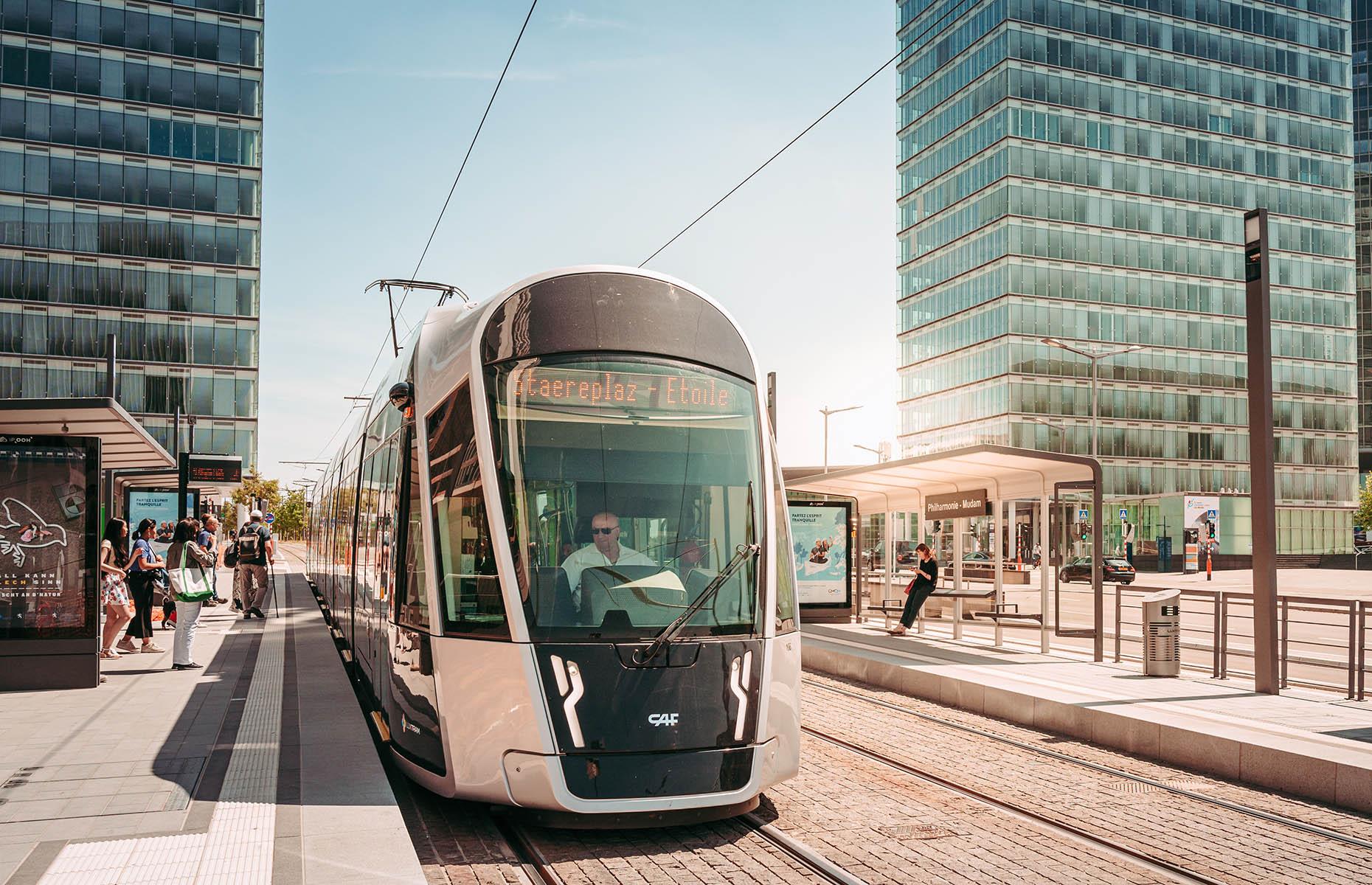
Rolling in money, Luxembourg has the third-highest GDP per capita in the world at around $125,897 (£98.9k). The principality's perfectly diversified economy is based on banking, steel, and advanced manufacturing.
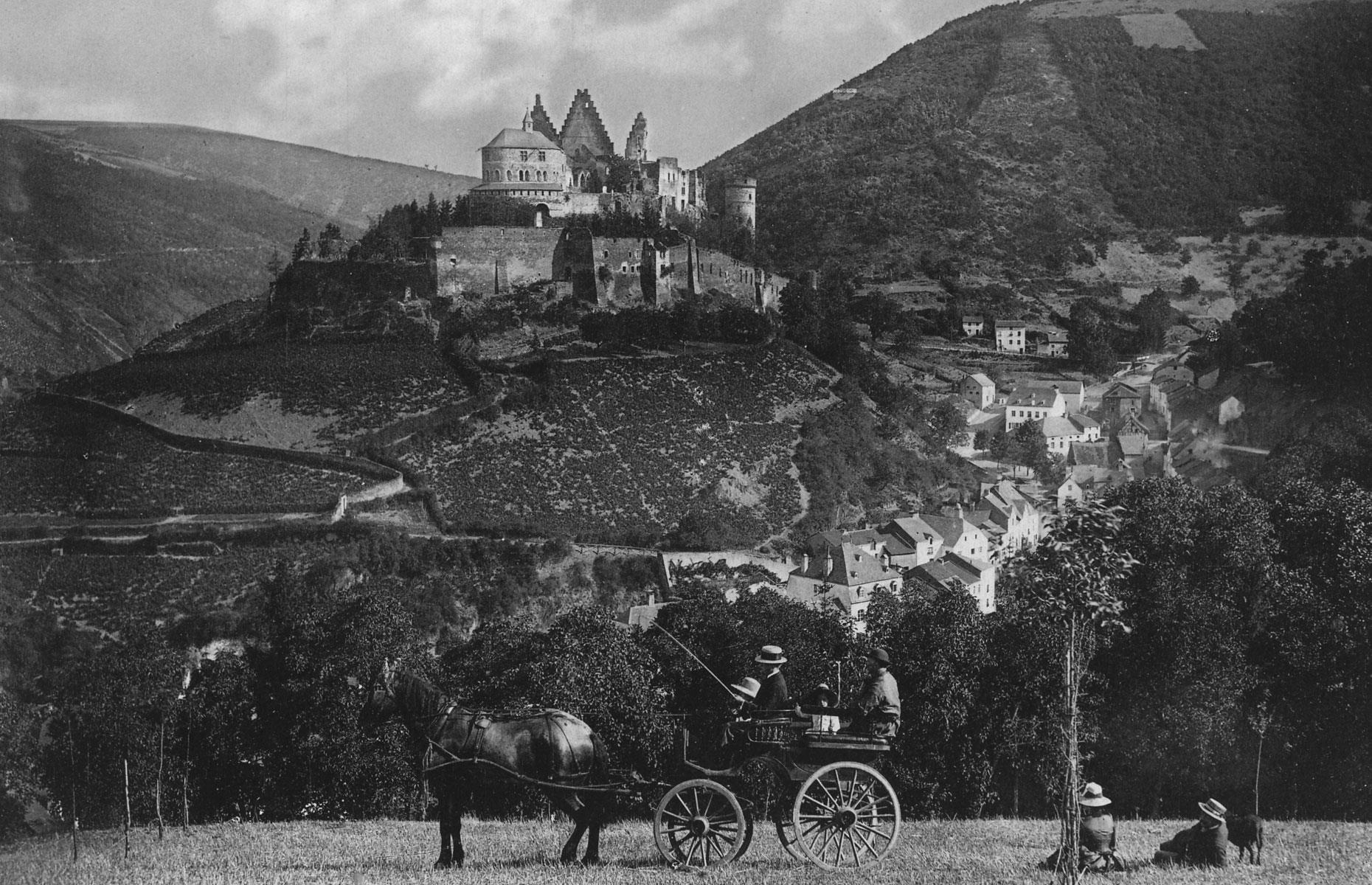
It's hard to imagine Luxembourg as a poor country, but that's exactly what the landlocked European nation was during the early 19th century. Around 80% of the population, approximately 180,000 people, were employed in agriculture and life was far from easy.
Trapped in grinding poverty, many families could barely afford to survive. Things got so bad that about a third of the population left to seek a better life elsewhere, heading mostly to the USA.

The discovery of significant reserves of iron ore in the mid-19th century changed Luxembourg's fortunes almost overnight. Mines and factories sprung up, and the country's lucrative steel industry was born. By the end of the 19th century, Luxembourg had become one of Europe's leading steel producers.
The steel industry thrived, and jobs abounded throughout the 20th century, except during the two world wars. Luxembourg developed banking and advanced manufacturing industries in the 1960s, and since then the economy has been in excellent shape, enriching the compact country massively.
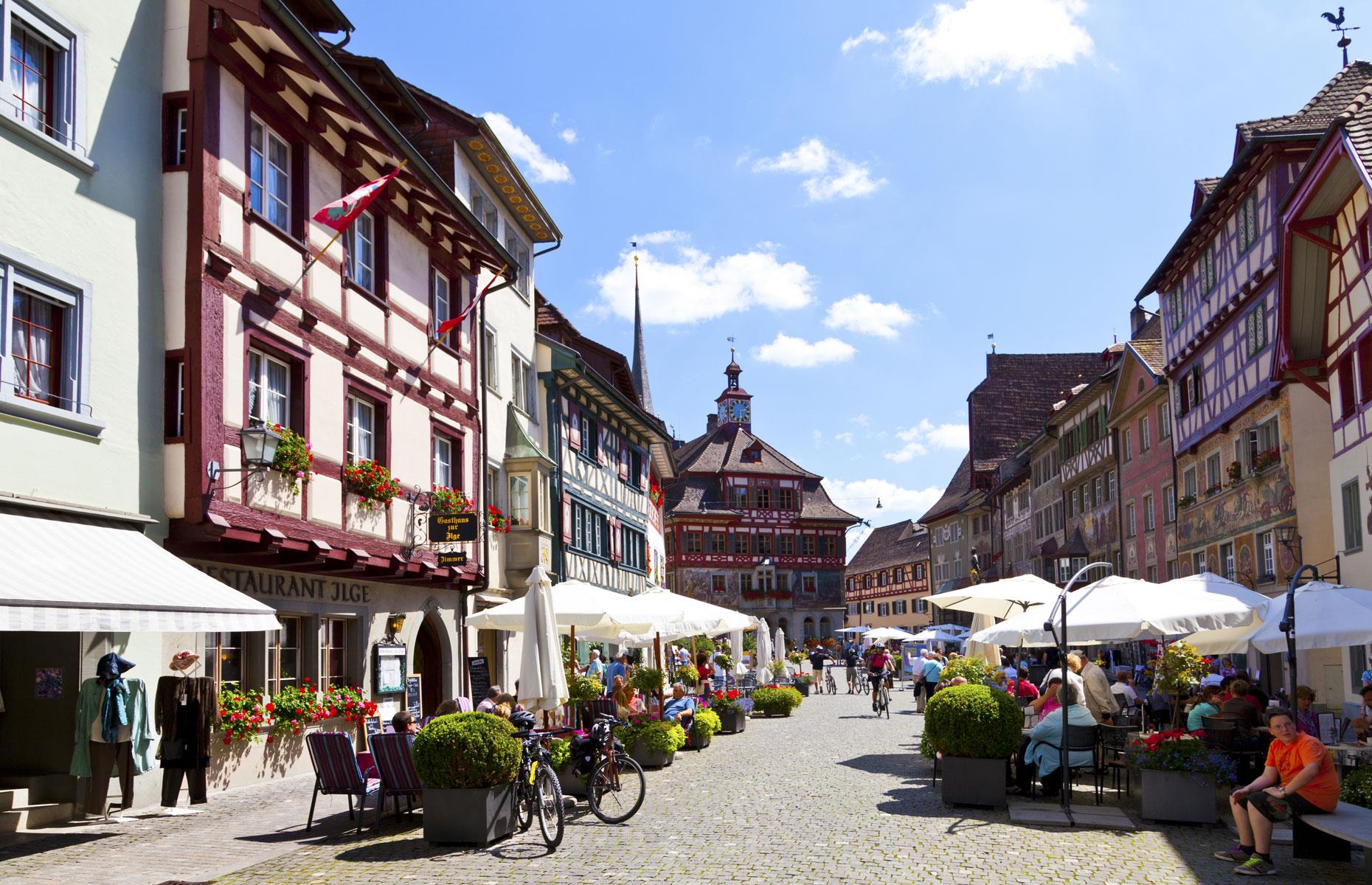
Switzerland
Today, Switzerland is synonymous with wealth and economic success. The country boasts some of the highest standards of living in Europe and its GDP per capita of around $93,636 (£73.6k) plants it firmly in the world's top 10.
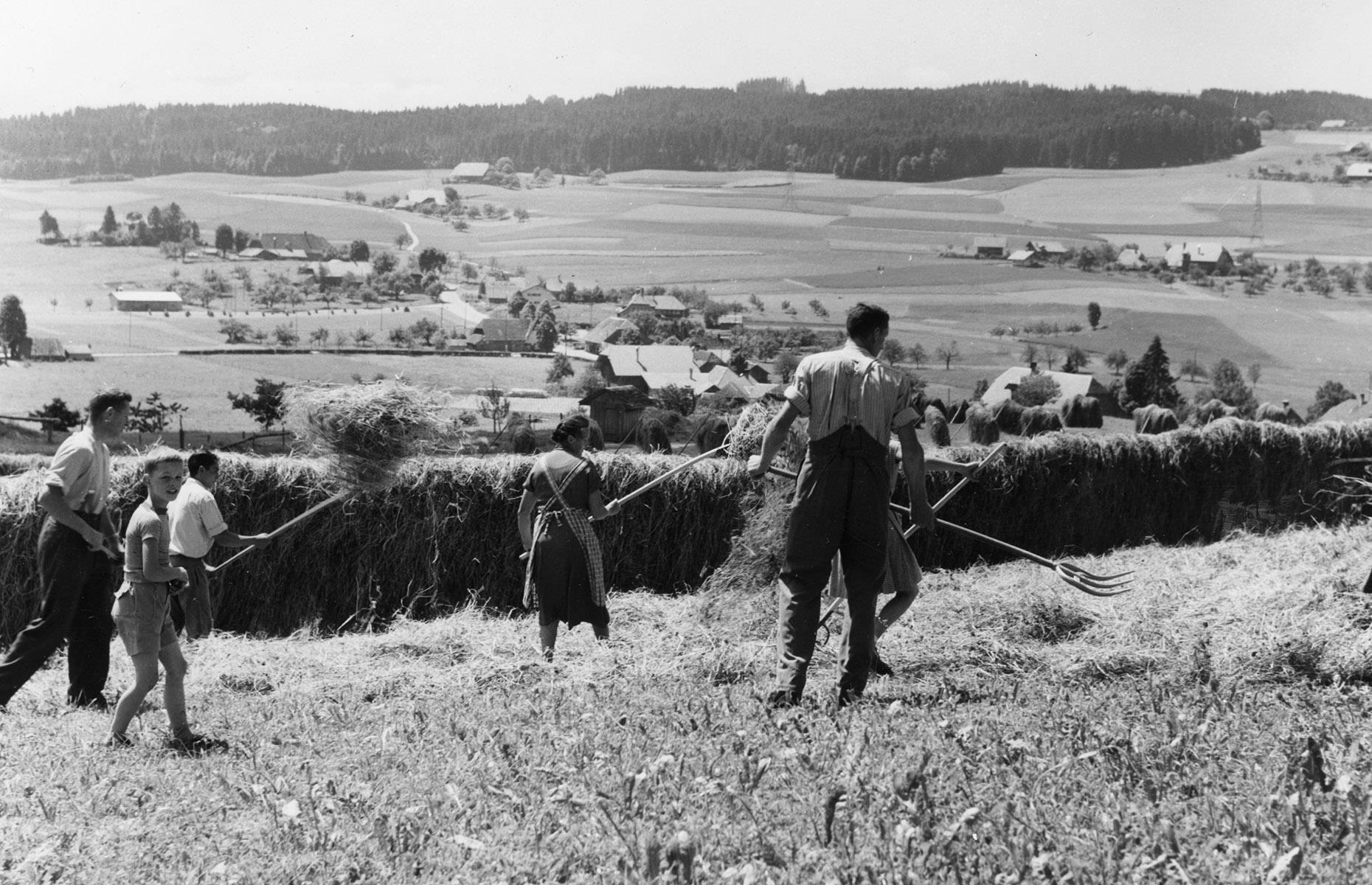
However, rewind 150 years and Switzerland was a poor nation. The landlocked country's mountainous terrain presented a major obstacle to development, industry was relatively primitive, and a large proportion of the population – particularly rural dwellers – had emigrated to escape a life of poverty.
In the late 19th century, a period of industrialisation nurtured by favourable economic policies began to transform the economy. At the same time, the country's banking and tourism industries started to blossom. Switzerland was fast becoming one of Europe's richest nations.
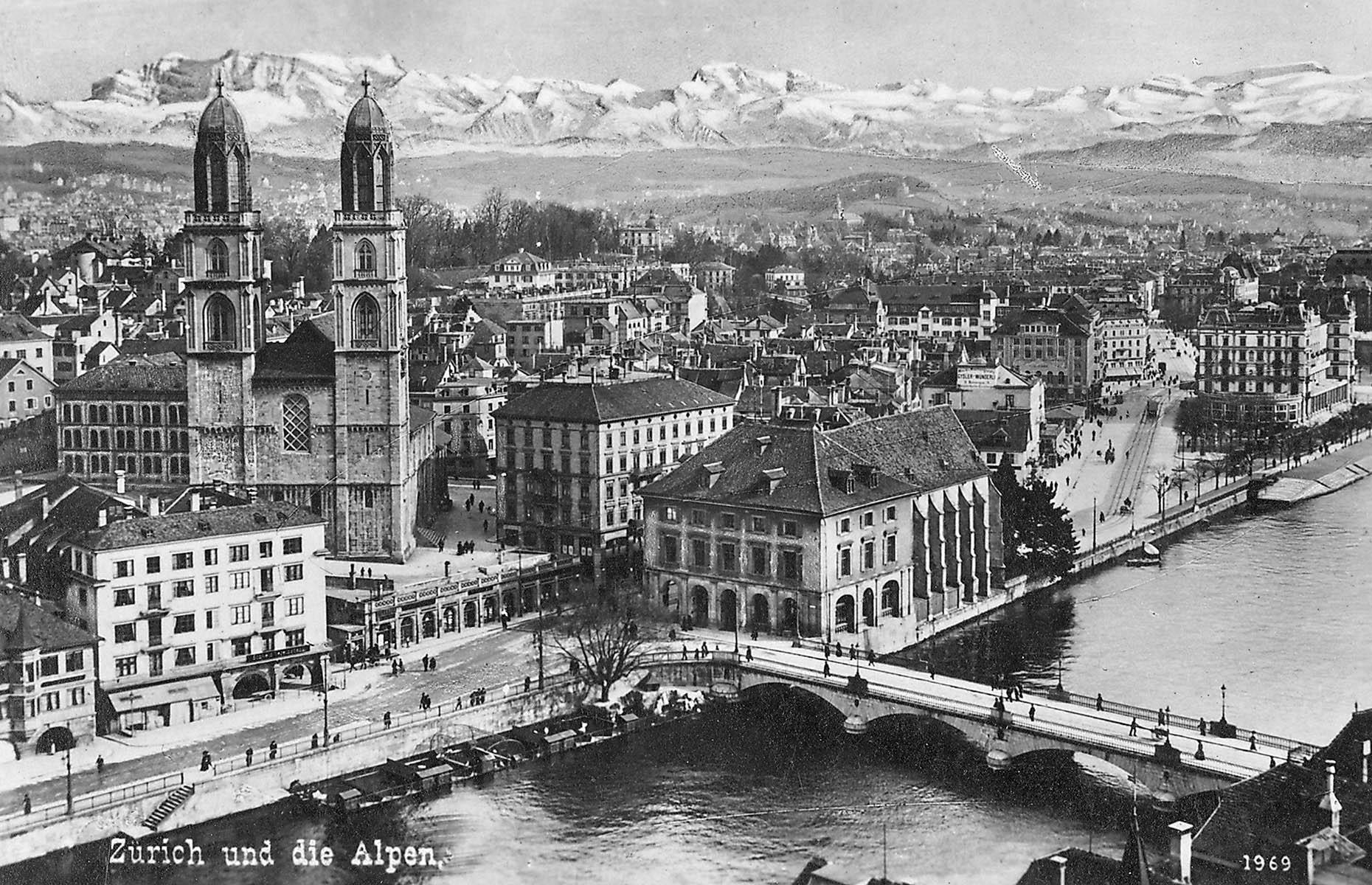
The momentum continued into the 20th century. Switzerland's famous policy of neutrality allowed the country to escape the ravages of the two world wars and profit from arms exports and bank loans.
The Swiss economy transitioned from an industrial to a service economy in the 1950s. Today, around 74% of the country's GDP is generated by the services sector, while 25% comes from industry (the remaining 1% comes from agriculture).
Although growth slowed down in the 1970s, Switzerland remains enviably wealthy with relatively low levels of government debt.
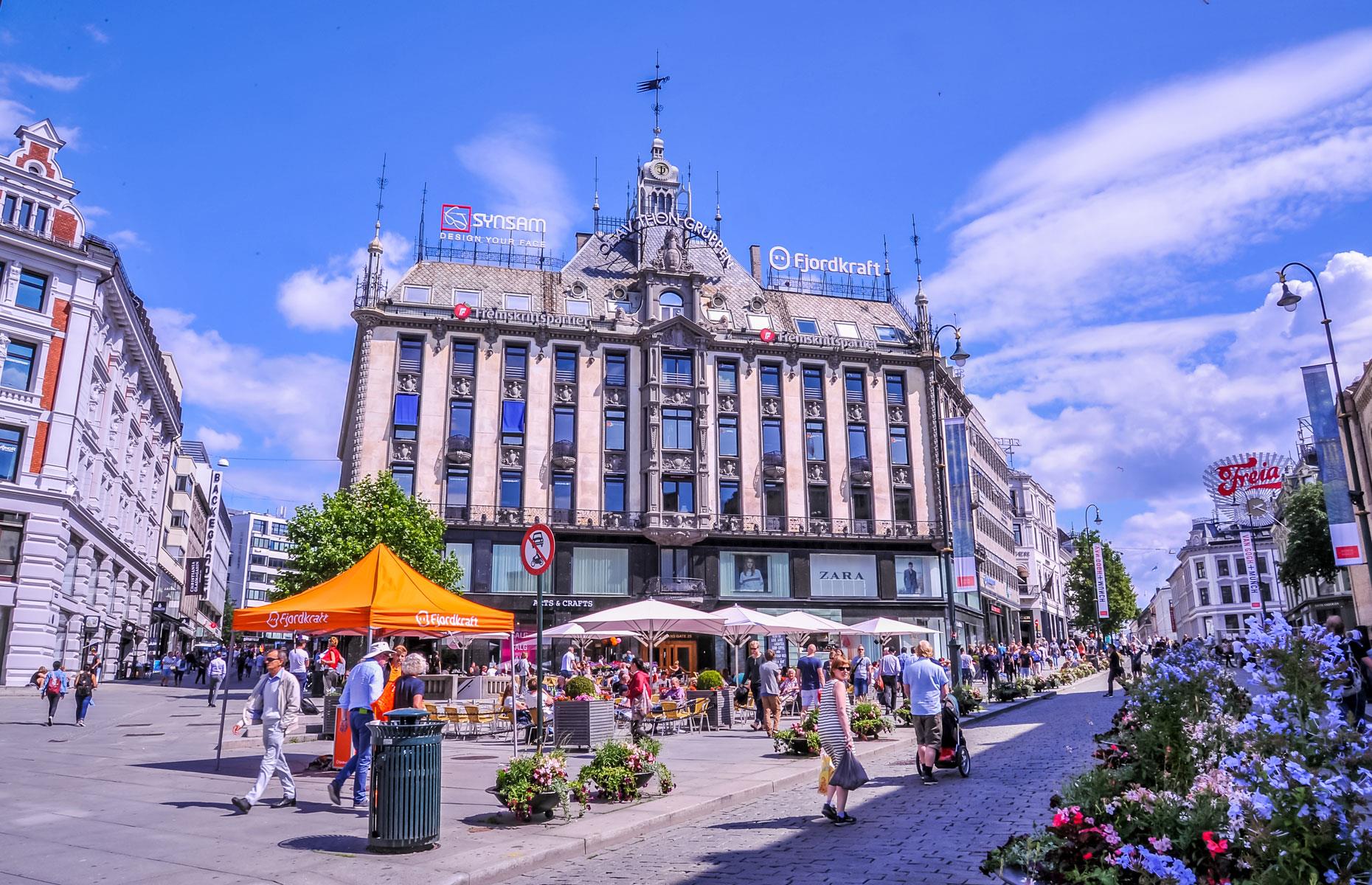
Norway's GDP per capita of around $106,622 (£83.9k) is one of the highest in the world. The nation has an oil fund worth approximately $250,000 (£197k) per Norwegian citizen and, in recent years, has consistently taken the top spot for standard of living in the UN's Human Development report.
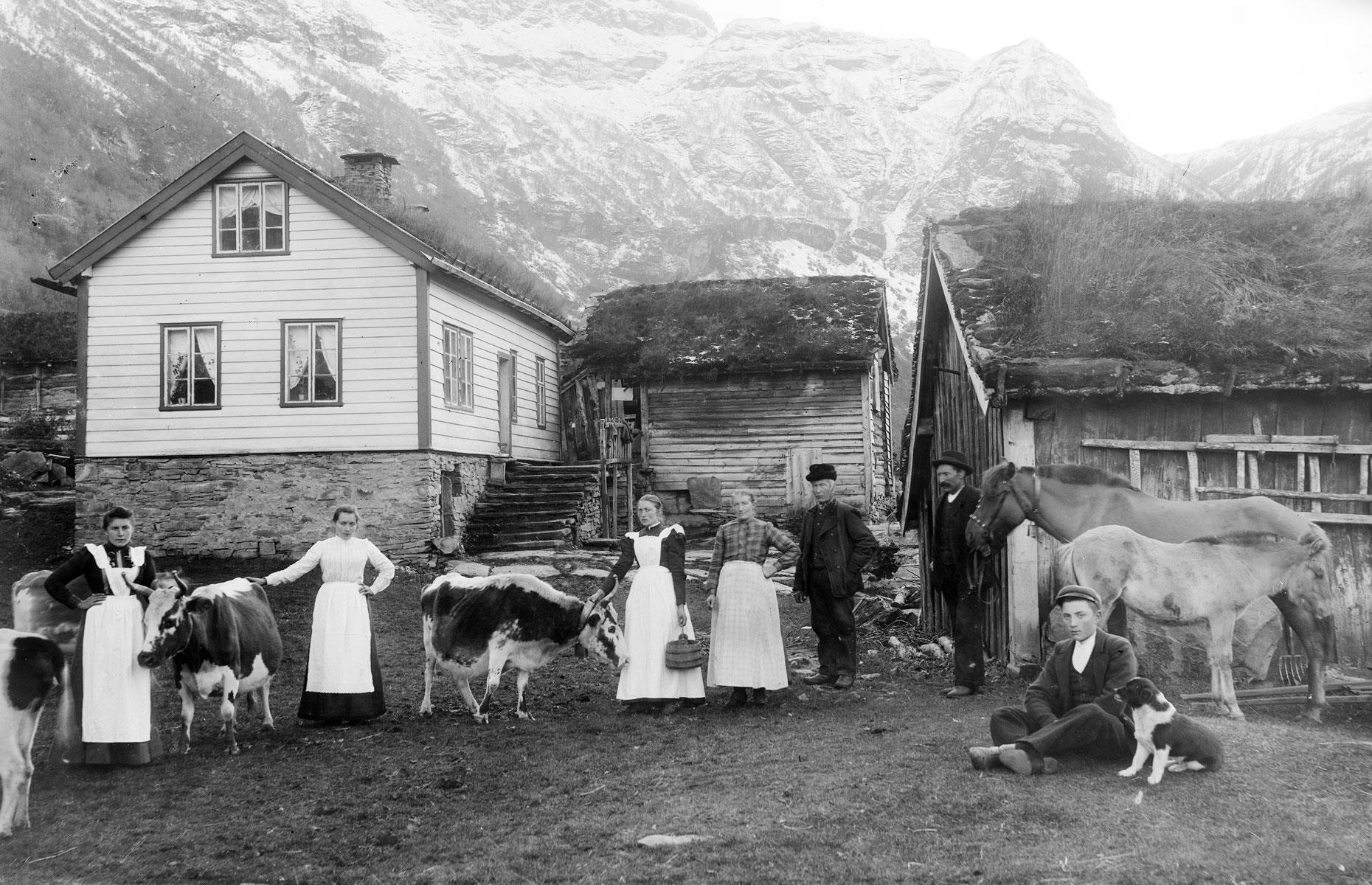
However, hardship prevailed in Norway during the 19th century. The bulk of the population worked in the agriculture and fishing industries, and wages were appallingly low. By the early 20th century, around 800,000 Norwegians had left to try their luck in the USA.
The country's financial situation improved in the early 20th century when the Norwegian government began to develop a hydroelectric power industry, which provided jobs and boosted GDP.

Norway entered recession in the 1930s along with the rest of the world and the economy was crippled by World War II. Following the war, Norway recovered rapidly thanks to funding from the US and had returned to prosperity by the 1960s.
In 1969, substantial oil and reserves were discovered in Norwegian territorial waters. Production began in 1971, and as the price of oil rose during the 1970s, so did Norway's GDP. The proceeds from the oil industry have allowed the country to develop a welfare state that is envied the world over.
Liking this? Click on the Follow button above for more great stories from loveMONEY
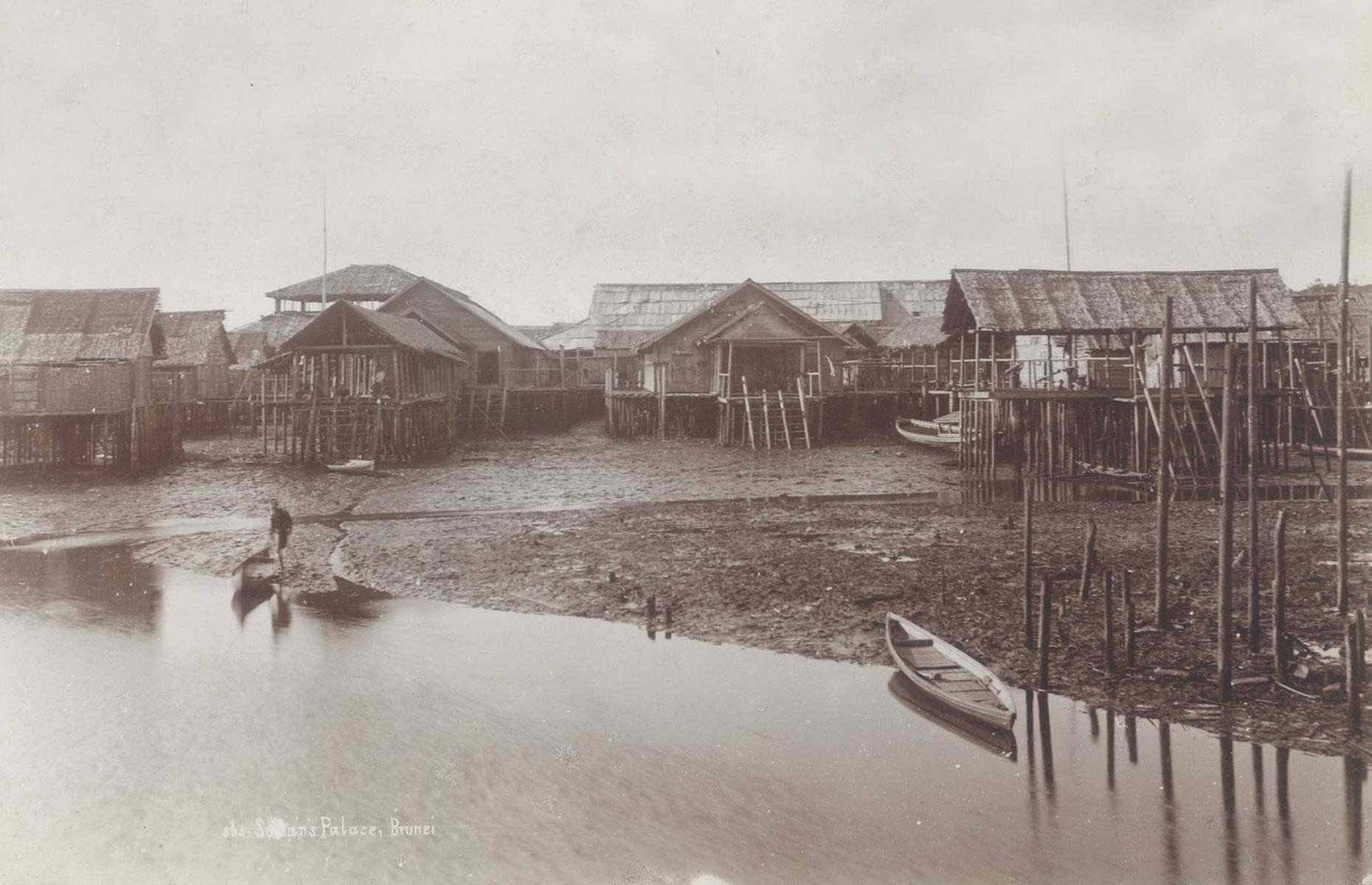
Brunei's GDP per capita today is around $37,152 (£29.2k). But prior to the discovery of enormous oil reserves in 1929, Brunei was a struggling British protectorate with high levels of poverty. It chiefly relied on the export of rubber and sago (palm tree starch) to power its economy.
This photo of the former royal palace reflects just how poor Brunei really was.
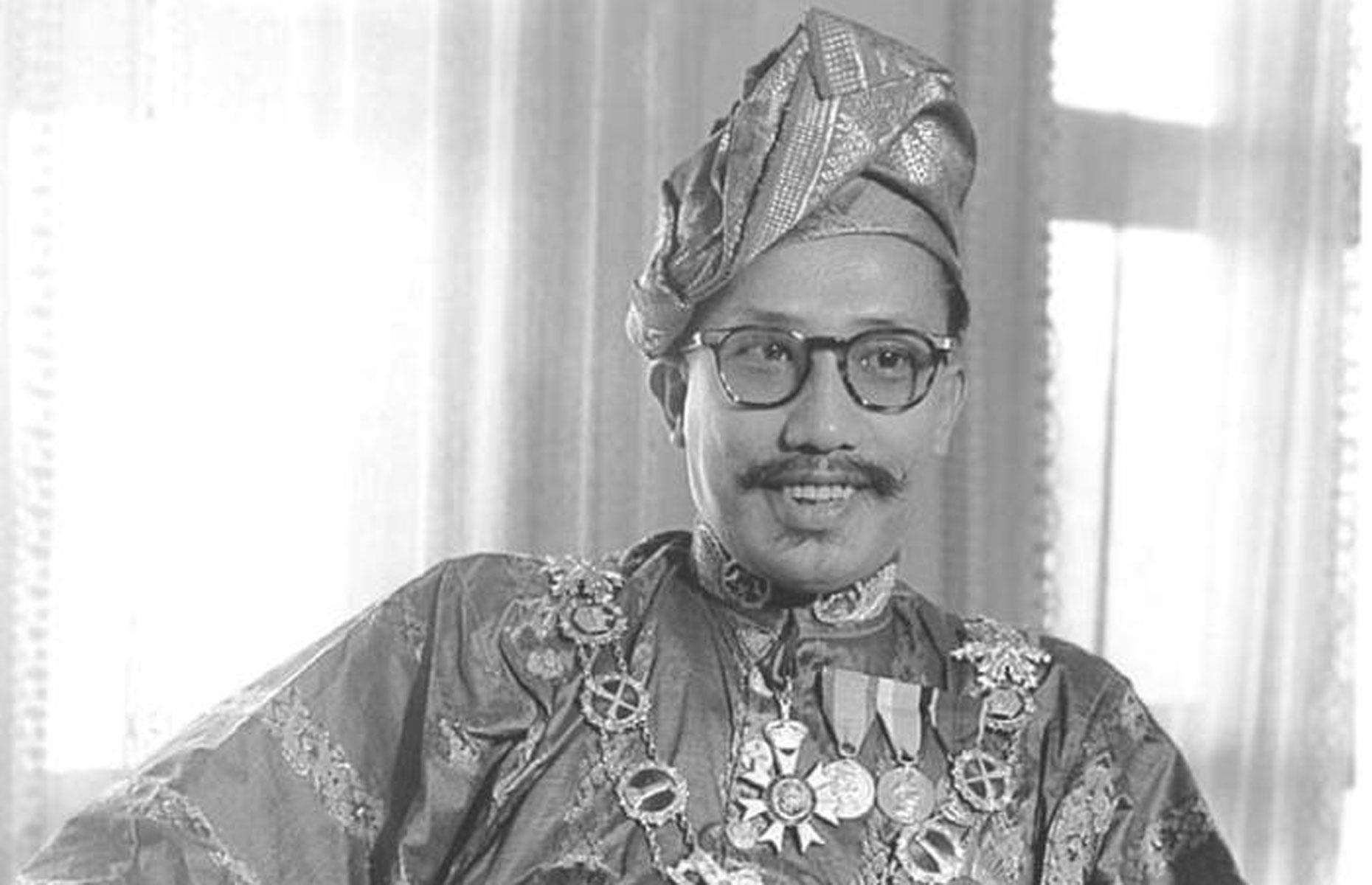
Despite the Great Depression and World War II, which stalled the growth of the oil industry, the sultanate became steadily richer during the 1930s and 1940s from exports of "black gold", reaping bumper royalties.
The 28th Sultan, Omar Ali Saifuddien III (pictured), implemented a series of National Development Plans during the 1950s and 1960s. The reforms updated infrastructure, created an advanced education system, and massively improved public health.
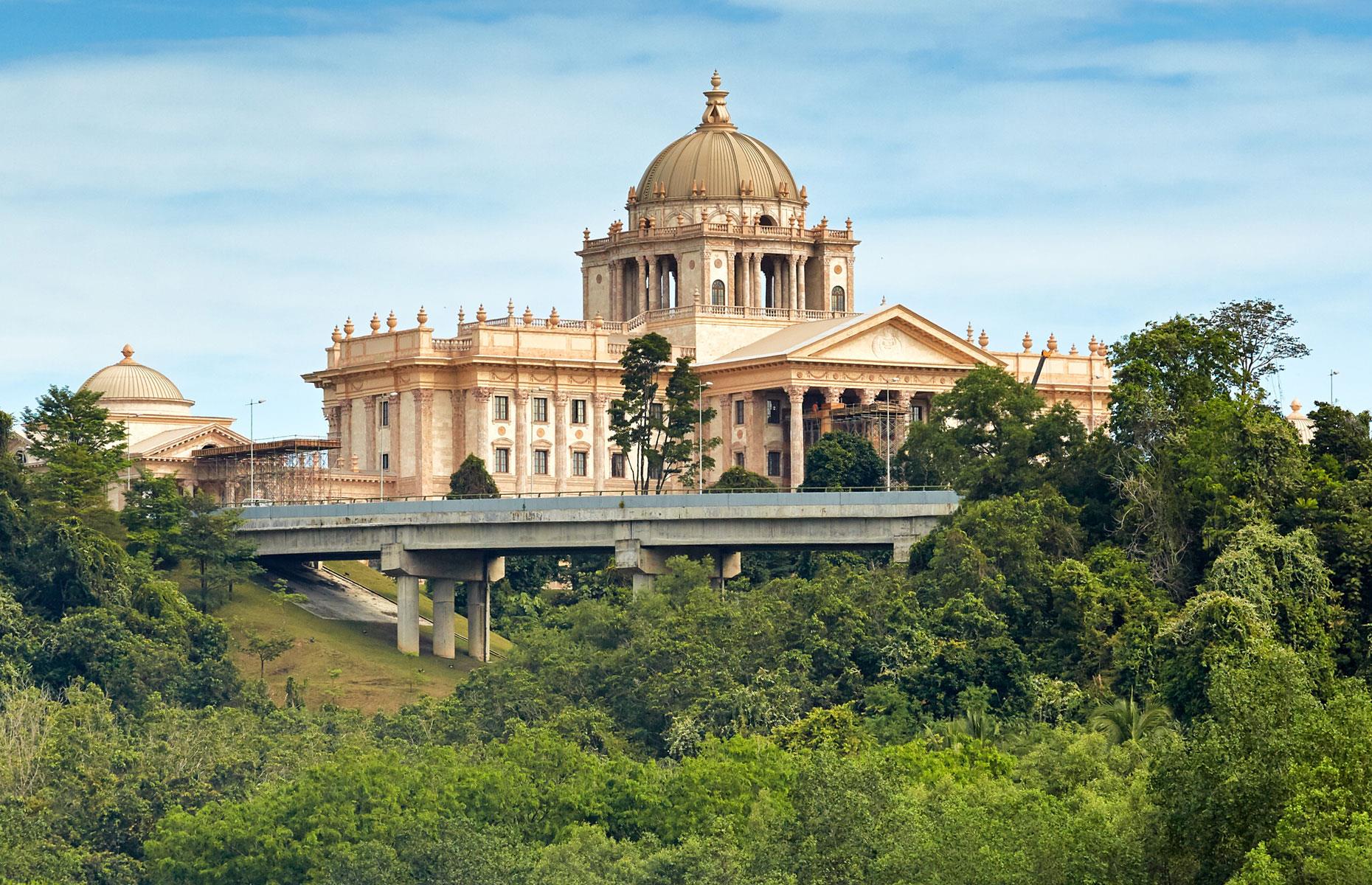
Natural gas reserves were discovered in the 1960s, and by the early 1970s the economy was booming and the standard of living in Brunei was virtually on par with Europe and North America. Additional reserves of oil and gas were found offshore in the 1970s, bolstering the economy further.
Since Brunei gained independence from the UK in 1984, oil and gas prices have dictated economic growth, which has fluctuated from highs of around 4.5% to lows of -2.5%. But the nation remains wealthy and the royal palace (pictured) is rather grander these days.

South Korea
At the outbreak of the Korean War in 1950, Korea was on its knees following decades of Japanese occupation. The industrialised North was actually wealthier than the South, which was focused more on crops and farmland.
The war ended in 1953 and South Korea remained in the economic doldrums until a coup in 1961 ushered in a military junta led by General Park Chung-hee. While the regime has been criticised for curtailing civil liberties, it effectively modernised the South Korean economy.

The country's first Five Year Plan was implemented in 1962 and rapid industrialisation followed. The nation's swift and remarkable progress was dubbed "the Miracle on the Han River" after the phrase "the Miracle on the Rhine" was coined to describe Germany's remarkable post-war economic recovery.
South Korea's famous family-run chaebol conglomerates such as Samsung and LG were guaranteed huge loans from the banking sector and special treatment as part of the first Five Year Plan. They and the nation's economy enjoyed jaw-dropping growth throughout the 1960s.
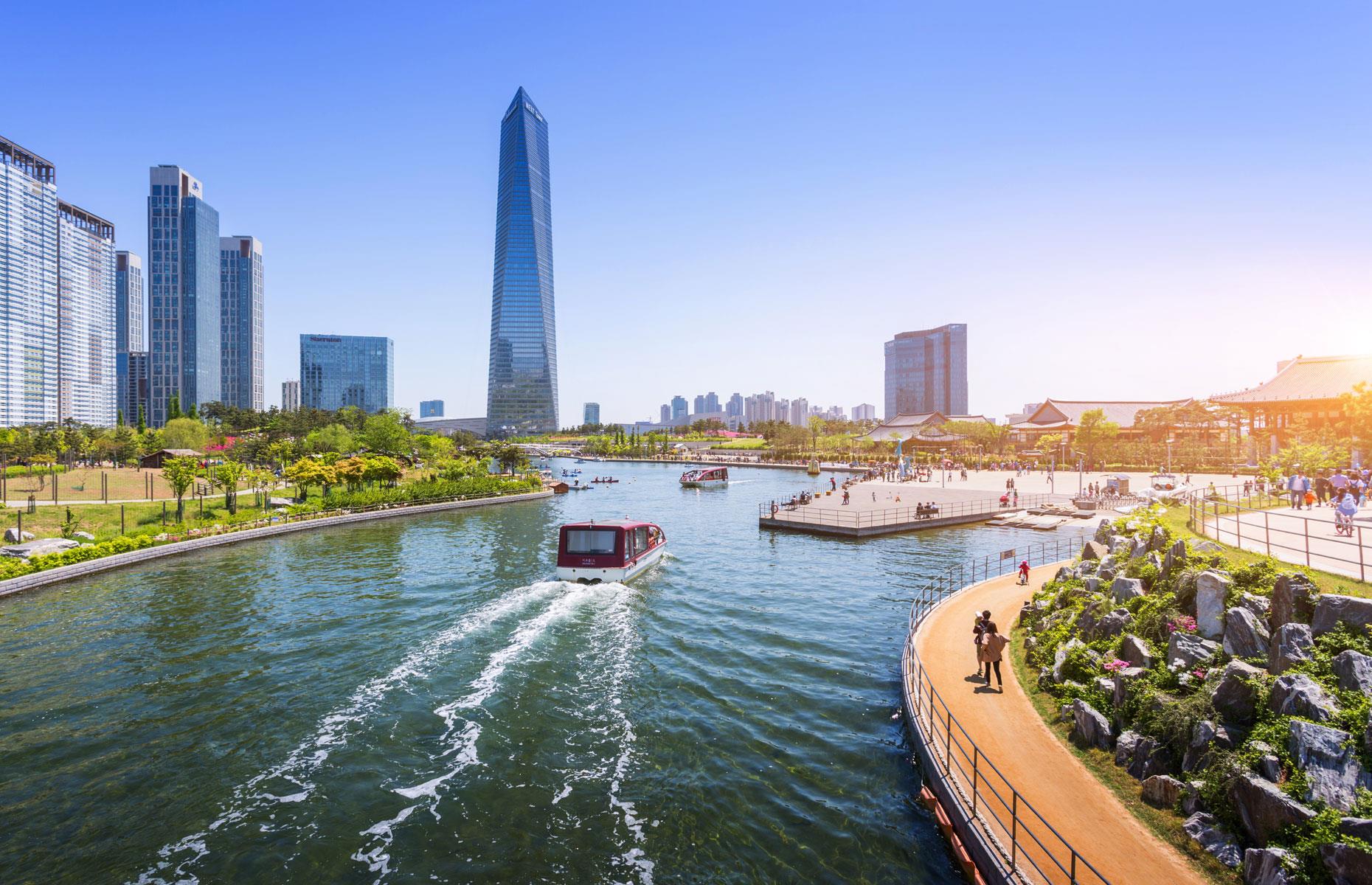
The country's steel and electronics industries flourished in the 1970s and growth topped 7.8%. By the time military rule ended in 1993, South Korea had become a developed nation.
Nowadays, the country's GDP per capita is in the region of $32,305 (£25.4k), dwarfing North Korea's $590 (£464). It's also higher than countries including Portugal, Malaysia, Brazil, and Spain...

Spain was originally a poor agricultural country that was devastated by civil war in the 1930s. This resulted in a repressive dictatorship that stifled the economy for decades, and the financial situation remained dire throughout the 1940s and 1950s.
The fascist government of General Francisco Franco focused on economic self-sufficiency during these decades, closing Spain off from the outside world and curtailing imports. This policy led to negative growth, a devalued currency, and severe shortages of essential goods.

As Western Europe became richer, Spain seemed to be going backwards. In 1959, Franco changed tactics and replaced the old guard in his government with younger, economically liberal ministers, initiating the first of Spain's development plans to kick-start the economy.
During the 1960s, Spain industrialised heavily and opened up to the outside world. Many factories were built around the country and tourism boomed. GDP per capita, which was only $7,359 (£5.2k) in 1960, had more than doubled by the time fascist rule ended in 1975.
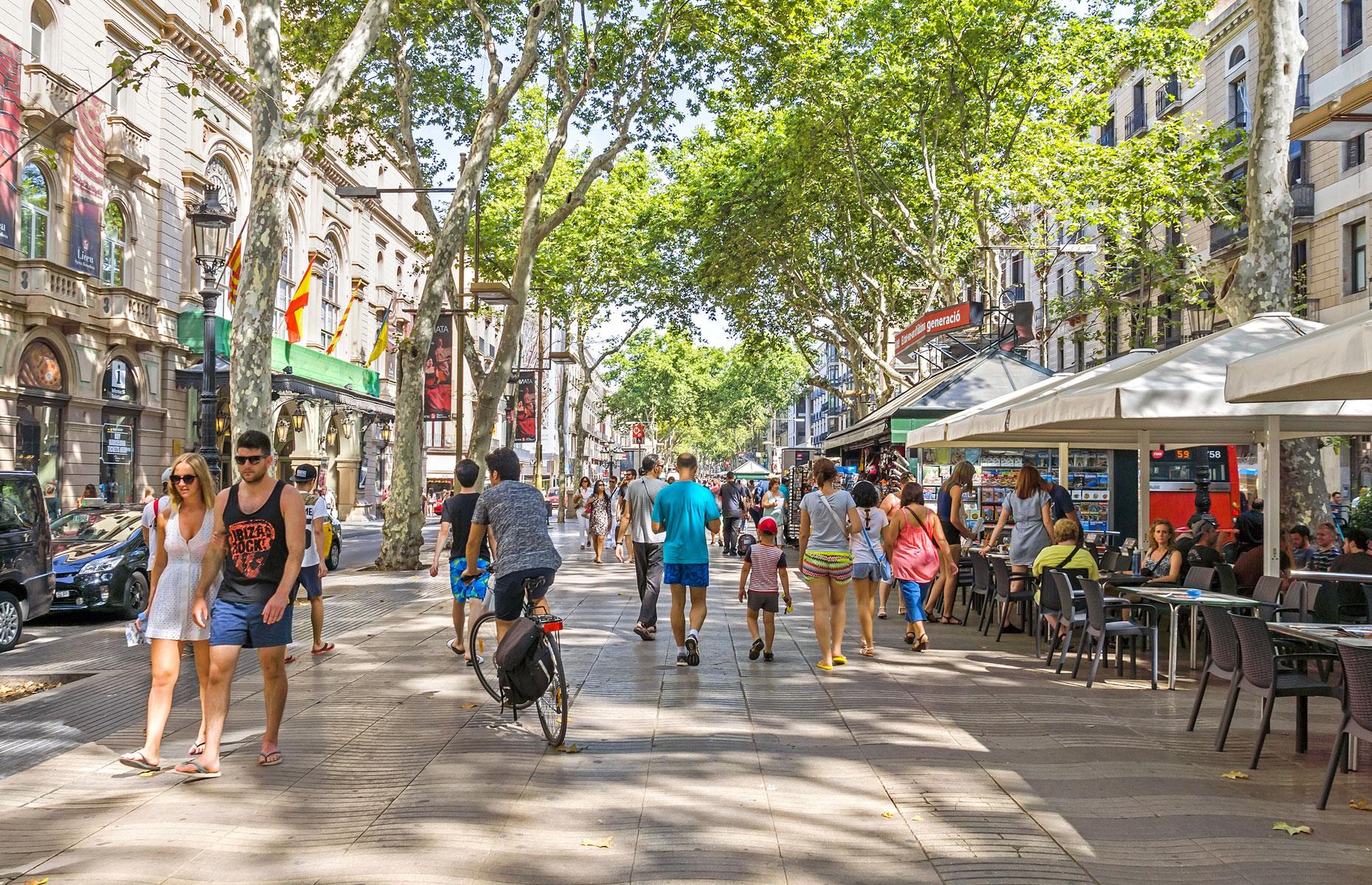
Since 1975, Spain has transitioned to an affluent modern democracy. The country joined the EU in 1986 and years of growth and rising living standards followed. Today, its GDP per capita stands at around $29,771 (£23.4k).
The economy took a battering during the Great Spanish Recession of 2008 to 2013 but is now on the road to recovery. It's also seen a massive boom in tourism revenue since COVID-19 restrictions were relaxed.
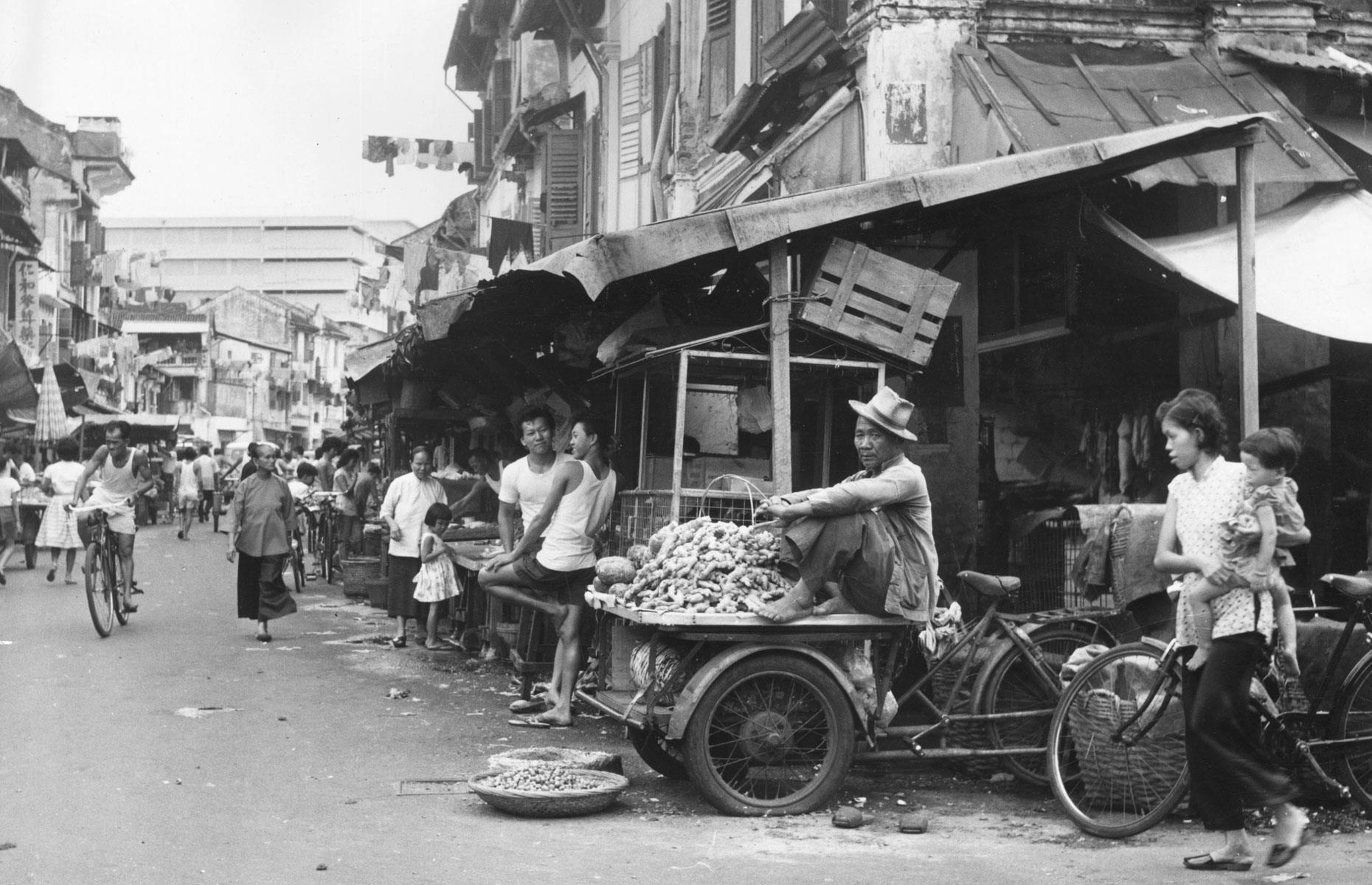
When Singapore gained independence from Malaysia in 1965, the tiny city-state was plagued by poverty and high unemployment. A third of the population lived in squalid slums, up to half the new nation's residents were illiterate, and GDP per capita was stuck at just $516 (£362).
With no natural resources, Singapore's economic prospects were looking very bleak indeed. The country's saviour came in the form of its first prime minister, Lee Kuan Yew, who set about transforming Singapore into a highly developed metropolis.
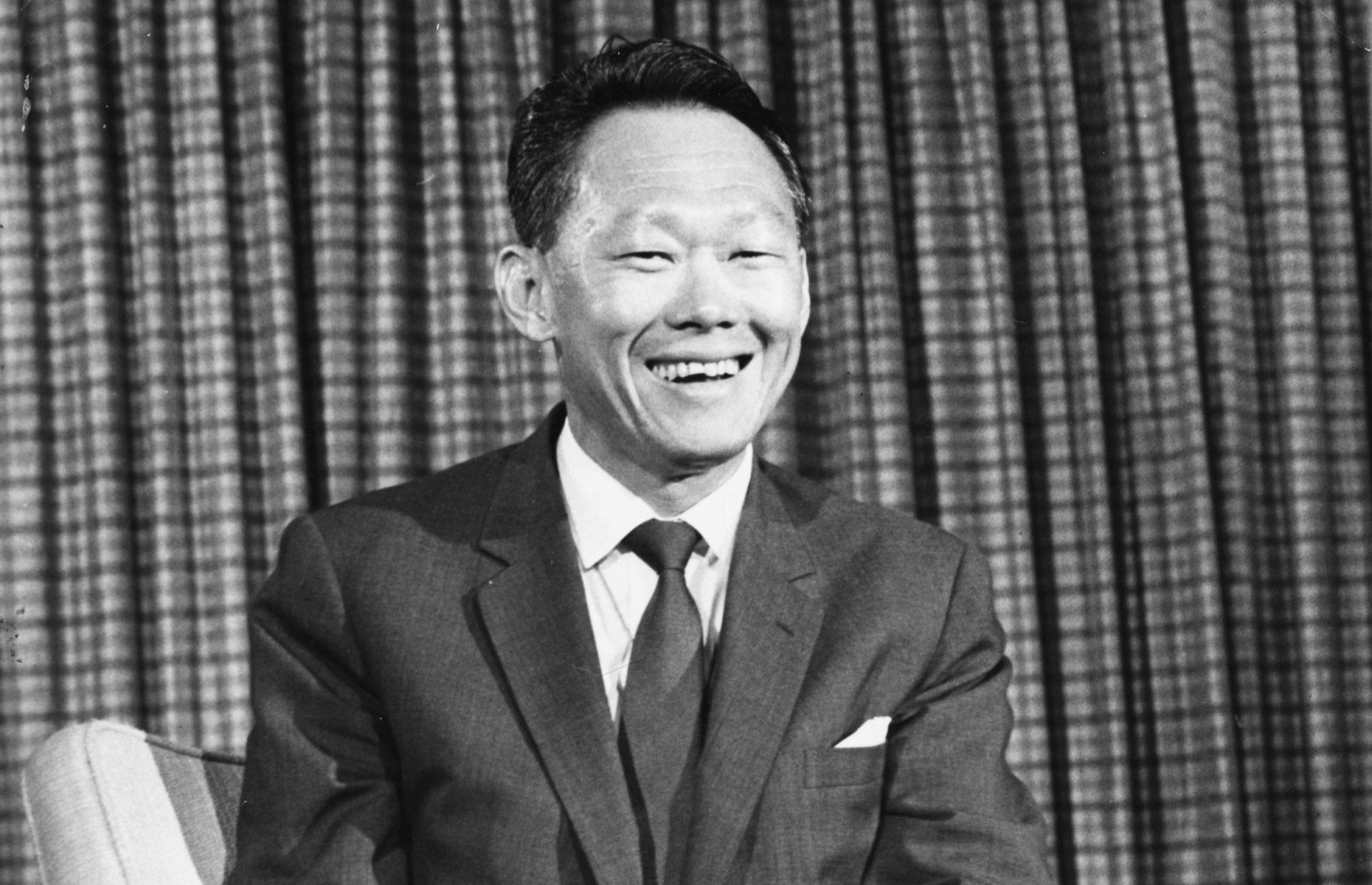
The visionary and sometimes authoritarian prime minister overhauled the education system and made English the common language, creating a highly skilled multilingual workforce. At the same time, Lee clamped down on corruption, slashed taxes, and – controversially – banned trade unions in an attempt to attract foreign investment.
Lee's policies had the desired effect and foreign money poured in, stimulating double-digit growth. The government spent its new-found wealth on improving Singapore's infrastructure, housing, and other amenities. By the 1970s, the standard of living in the up-and-coming city-state had markedly improved.
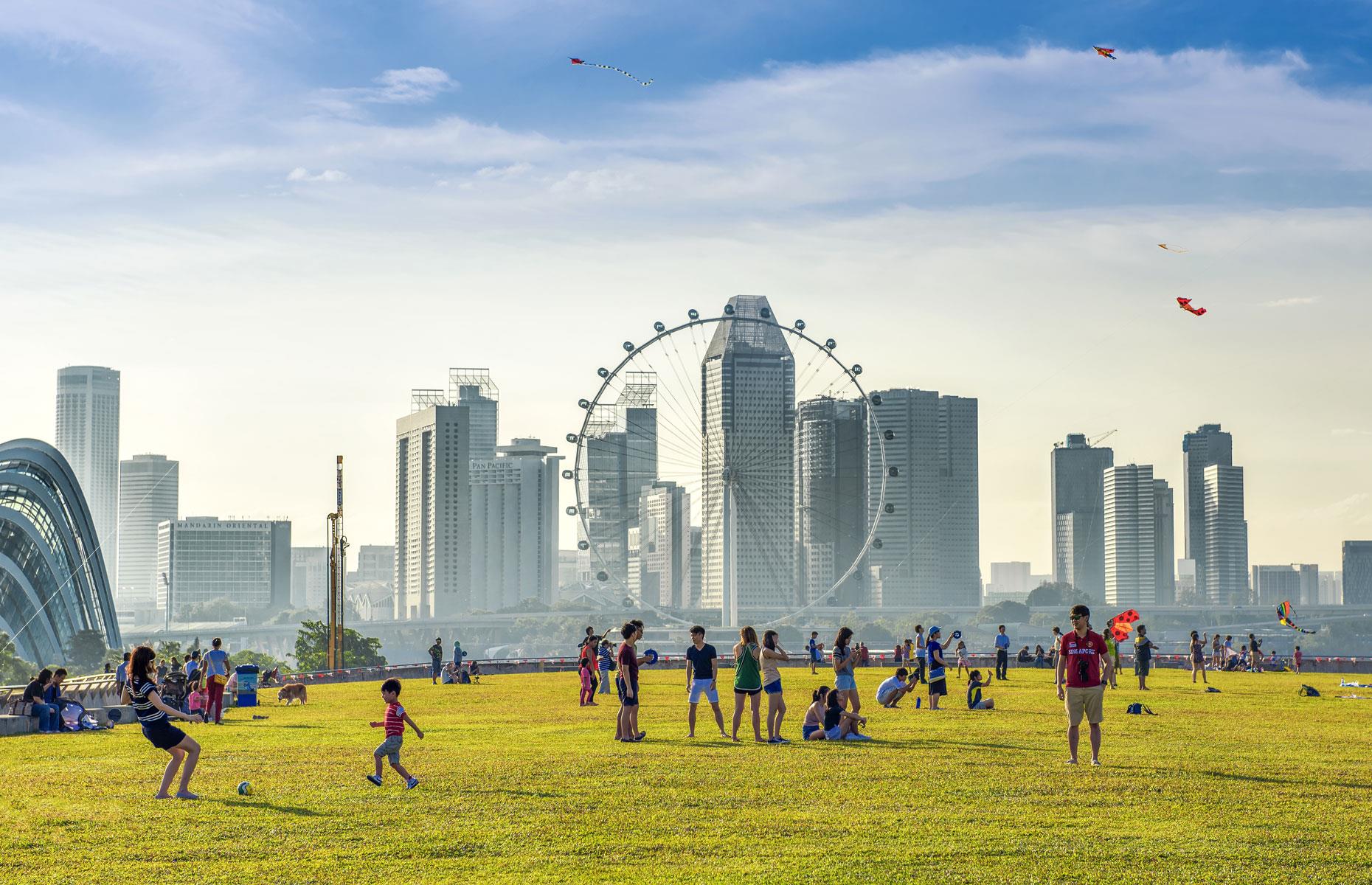
When Lee stepped down in 1990, Singapore had become the glittering city-state he'd envisaged all those years ago.
Today, the economy is ranked among the most open and business-friendly in the world and living standards are high. Meanwhile, its GDP per capita is one of the highest in the world at around $78,144 (£61.4k), larger than the UK, the US, and Germany.
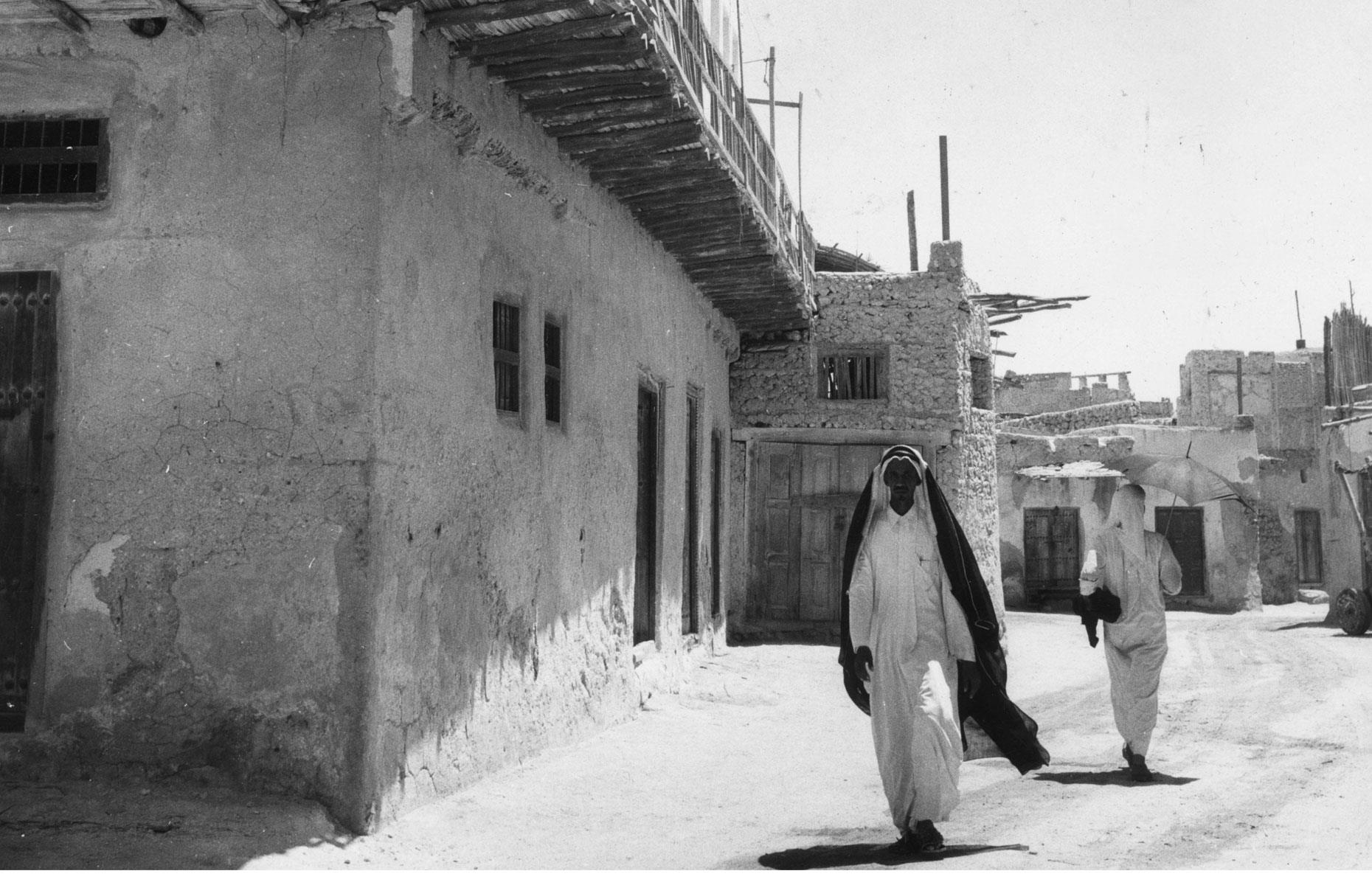
Saudi Arabia
Saudi Arabia was among the poorest countries in the world when it was founded in 1932. The country depended on the revenue generated from worshippers undertaking the Hajj pilgrimage to Mecca, as well as income from agriculture, which was modest and unpredictable.
The Gulf state was woefully undeveloped, lacking everything from housing and hospitals to proper roads and reliable electricity. The majority of the population was unable to read or write and lived very simple lives.

All that changed in the late 1930s. The discovery of colossal oil reserves in 1938 was an epic reversal of fortune for the needy country. By the late 1940s, Saudi oil wells were pumping out barrel upon barrel of the commodity, but the country really cashed in from the 1970s onwards.
The 1973 oil crisis pushed up prices and massively enriched the Saudi economy. Prices dropped during the mid-1980s and were low until the late 1990s. During this time, Saudi Arabia racked up substantial foreign debts, but its citizens maintained a high standard of living.

The government balanced the books when the oil price picked up in the late 1990s and stayed high until the late 2000s. When prices started to dip, Saudi Arabia began the process of diversifying its economy – but its oil reserves have proved staggeringly profitable as much of the world turns its back on Russia's supply.
Although Crown Prince Mohammed bin Salman's super-ambitious Saudi Vision 2030 plan aimed to reduce the country's dependence on oil, the nation made more than $200 billion (£157bn) from oil revenues last year. Its GDP per capita today is around $30,436 (£23.9k).
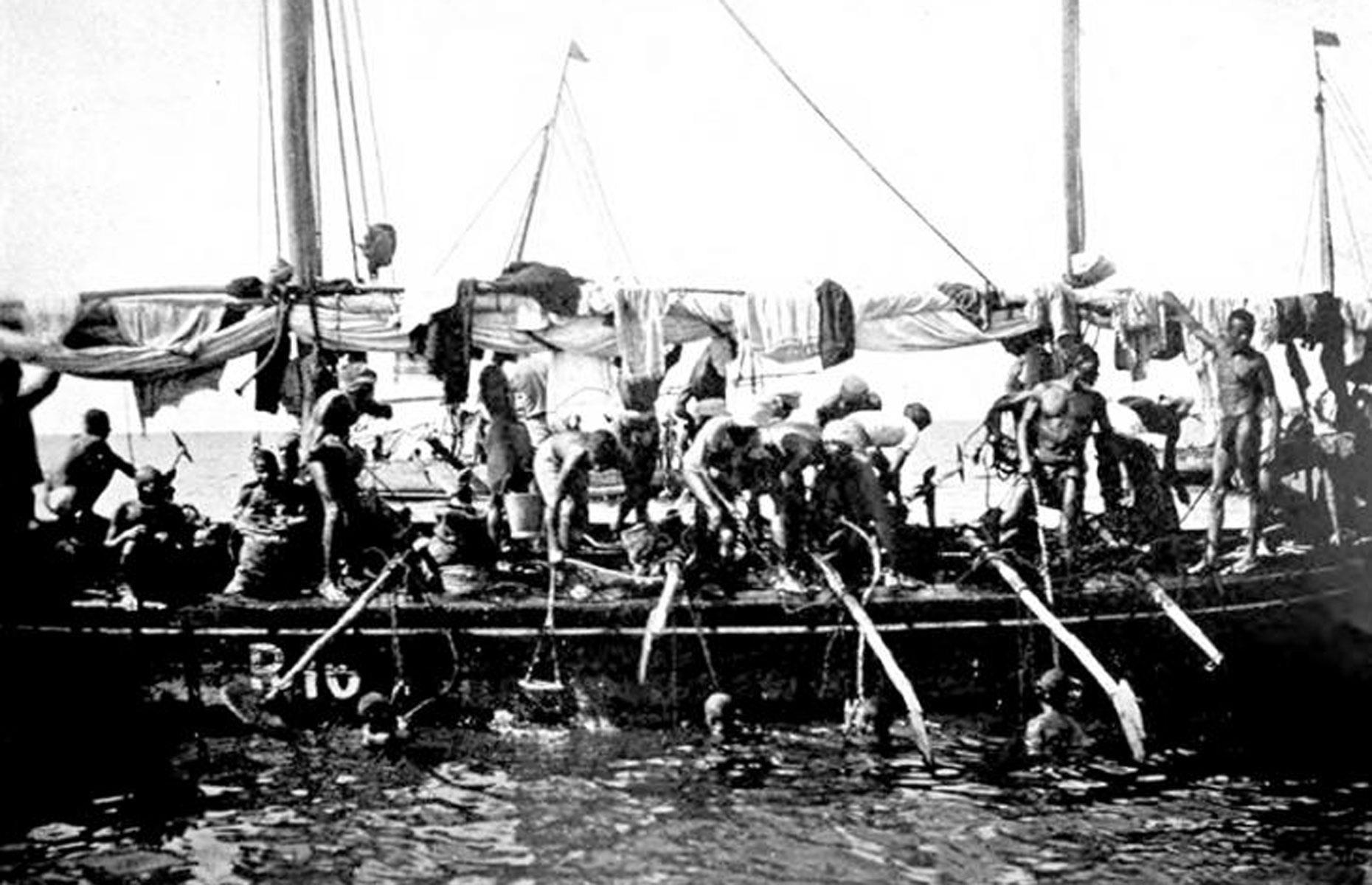
Like Saudi Arabia, Qatar was an impoverished country during the early part of the 20th century. The Gulf state, which became a British protectorate in 1916, was reliant on fishing and pearl diving (pictured), and most Qataris had to work long and hard to make a decent living.
Oil was discovered in 1940, but World War II put a halt to further exploration, and it wasn't until 1949 that Qatar began producing the black stuff in earnest. Flush with oil money, the Middle Eastern country modernised at breakneck speed during the 1950s and 1960s.

When Qatar gained full independence from the UK in 1971, the country was reaping the rewards of more than two decades of oil extraction. Industry and infrastructure were much better developed, and the general standard of living had improved greatly.
The increase in the price of oil during the 1970s drove impressive growth, but the commodity's falling price from 1980 to 1997 stagnated the economy. When the oil price recovered in the late 1990s, Qatar experienced a sustained period of economic growth.
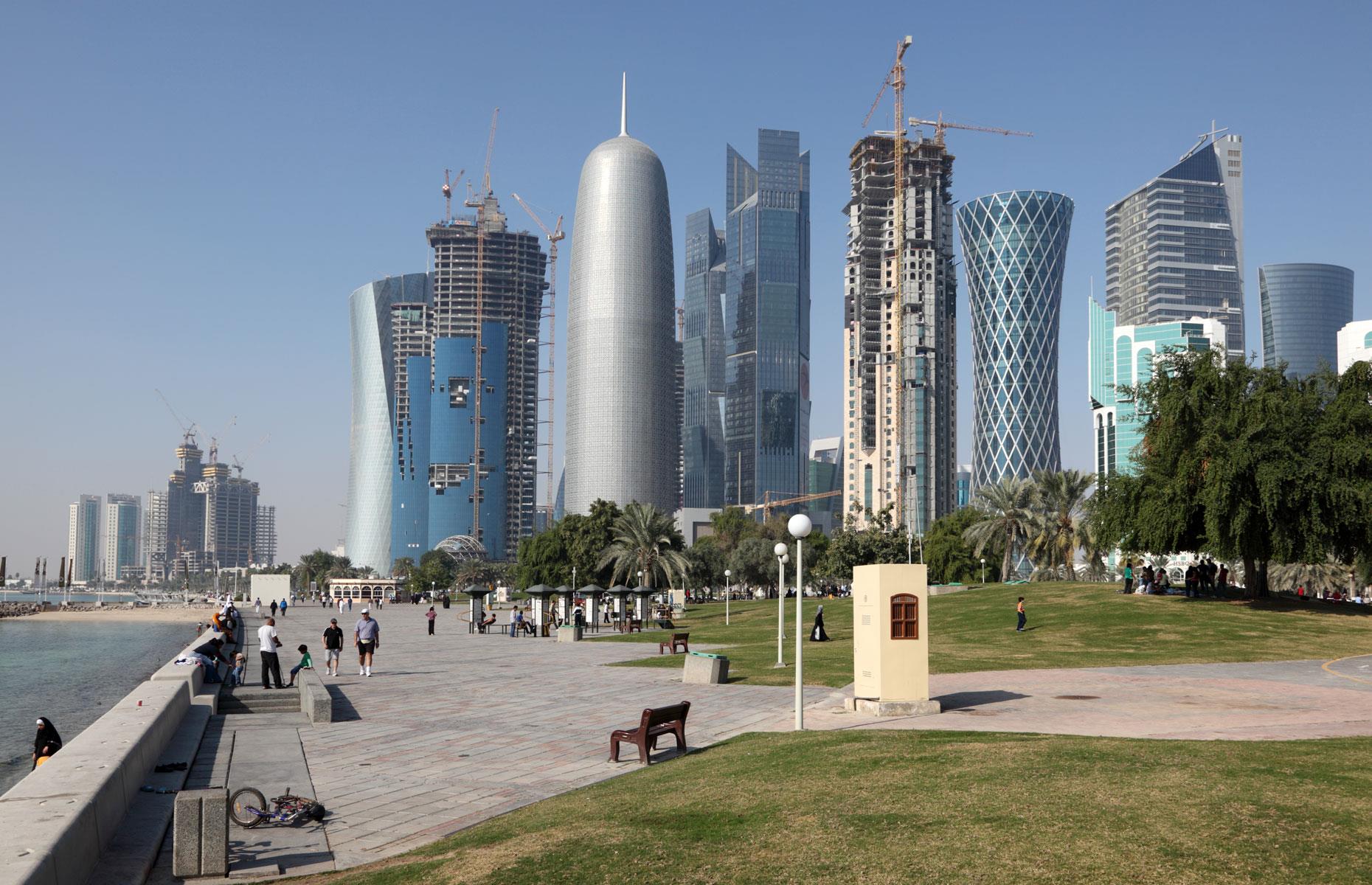
Since 1997, real GDP growth has peaked at an astonishing 30%. Qatar has put more of a focus on natural gas extraction and, like Saudi Arabia, is keen to diversify its economy. However, oil is still a huge money-maker for the nation.
Today, Qatar boasts one of the highest GDP per capita in the world at around $87,974 (£69.2k) – putting it way ahead of the likes of Canada, France and Australia.

Back in the early 1990s, Ireland was one of the poorest countries in Europe, with a GDP per capita of just $14,000 (£9.8k). Unemployment and inflation were high and economic growth had stalled. The general standard of living was low and much of the rural population struggled to get by.
The luck of the Irish worked its magic from the middle part of the decade to the late 2000s, and growth skyrocketed to 9.4% during the so-called "Celtic Tiger" period. Attracted by an increasingly educated workforce and favourable business rates, foreign businesses flocked to the Emerald Isle.
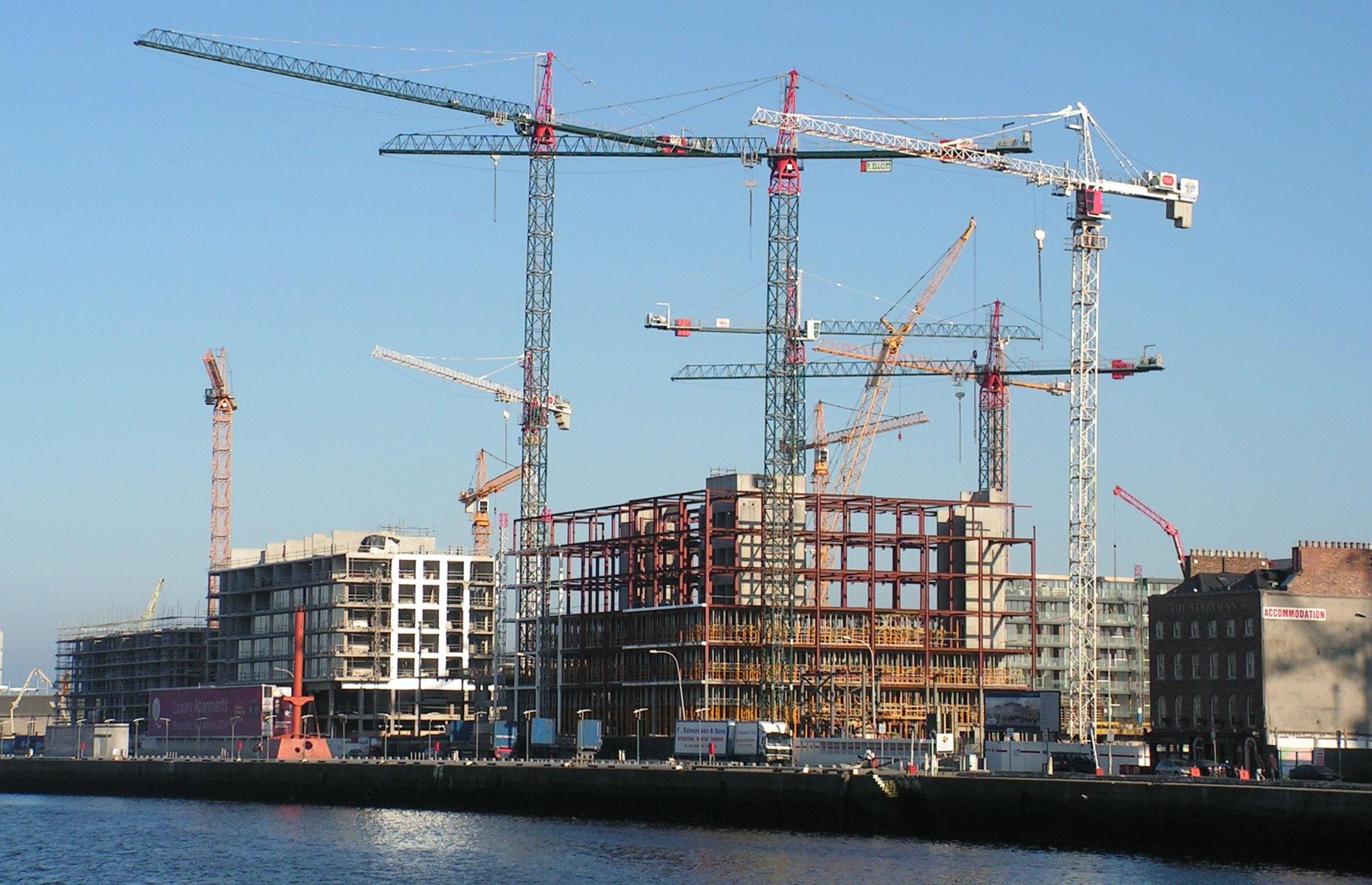
Unemployment plummeted from almost 16% in the early 1990s to just 3.9% in 2001, and the standard of living in Ireland rose to rival that of the richest countries in Europe. Irish consumer spending hit record levels, construction boomed, home ownership soared, and GDP per capita hit $61,000 (£45k) by 2007.
The party ended in 2008 when the Irish economy fell into recession. The fallout from the global financial crisis was aggravated by a severe housing bubble, and Ireland was forced to accept an EU and IMF bailout package. A period of austerity followed.

Since then, Ireland – which has the world's sixth-highest GDP per capita at $105,993 (£83.3k) – has made a spectacular comeback. It's been one of the fastest-growing economies in Europe in recent years, and an upsurge in foreign investment and increased consumer spending are working wonders on the nation's finances.
Now discover nine countries that used to be rich and why their fortunes faltered
Liked this? Click on the Follow button above for more great stories from loveFOOD
More for You
All the things that happens to your body if you’re constantly waking up at 6am
These Are Arnold Schwarzenegger’s Most Underrated Training Tips
Another pandemic is ‘absolutely inevitable’, says Patrick Vallance
Eight inheritance tax traps that could cost your family a fortune
Is your car too big to fit in an average parking space?
The 20 saddest deaths in horror movies
I pay £395 a month to live in an underground doomsday bunker
I drank lemon water every day for seven days to boost digestion and hydration - here’s why I wouldn't recommend it
Cash for clutter: how to make money from what’s in the attic
Mandatory national service for 18-year-olds if Tories win election, Sunak vows
How to find out who owns a fence - and who pays repair bills
The top 25 greatest hits albums of all time
Alan Shearer slams 'disrespectful' Man Utd chief as Erik ten Hag prepares to be sacked
How tax on personal savings works
Psychologist warns of the major red flags if you enjoy true crime documentaries
Lando Norris punished for George Russell incident as Max Verstappen investigated after Monaco FP3 incident
How to build glutes in 7 steps, according to the pros
US Pilot Displays Insane Landing Skills During CH-47 Chinook Landing
Every child needs to learn about dangers of getting into debt
Here’s Why Riding Motorcycles Makes You a Better Driver

Northwest Montana 2024 state Legislature primary voter guide
A ballot box at the Flathead County Election Department. (Daily Inter Lake FILE)
Ahead of Montana’s June 4 primary election, the Daily Inter Lake sent questionnaires to state Legislature candidates running in contested races in Northwest Montana. Candidates were instructed to keep their answers to each of the four questions to under 150 words. Answers were lightly editing for brevity, clarity, Associated Press style and grammar.
Senate District 5
Republican primary
Name: Matt Regier
Age: Not provided
Occupation: Not provided
Family: Not provided
Background: Not provided
How would you address property taxes?
Across our state and especially in the west, property taxes have become unmanageable. At the state level, we could provide relief by mitigating the state property tax rate. In 2017, I supported House Bill 558, which would have lowered the state property tax rate. It died before getting to the governor's desk. In 2021, House Bill 636 would have done the same. Unfortunately, it didn't get out of committee. The state has a surplus and can do with less revenue from homeowners. Also, rather than go to the general fund, the state could return 3% of the bed tax back to the city or county of origin to help pay for the local infrastructure needs that are partly caused by tourists. The state could also return the lottery revenue where it rightfully should go, the Teachers Retirement Fund, creating less strain on property tax payers. These are a few simple ideas the state could implement to help relieve property tax burden.
How would you further address Montana's housing supply?
The state can help lower the price of housing by getting out of the way. Growing up in the Flathead in the 1990s, I used to see signs all over stating, "This family supported by timber dollars.” It is no coincidence that our lumber mills are gone along with those signs. All of the decisions by elected officials to stop managing our natural resources has contributed to rising housing material cost. Housing demand has risen with the influx of migration. I don't blame anyone for moving here. There is no better place on earth to live, work and play. However, Montana doesn’t have to spend state dollars on a marketing blitz in New York or San Francisco to get people to come to Montana. The state needs to do a better job of protecting life in Montana and not incentivizing out of state change.
Does the state’s constitution need to be changed to alter the right to privacy? If so, how would you alter it?
No, it does not need to be changed but it must be read correctly. Our constitution states "The right of individual privacy is essential …” Even in this question the word “individual” was left out. I fully believe in individual right to privacy as our constitution clearly states. I recognize the courts and even this question attempt to mislead. When it is no longer only an individual but other individuals involved, then the state has an obligation to be involved. Examples are a parent may not physically abuse their children, nor can you steal another individual’s private property, or cheat on your taxes — all of which involve/affect other individuals. Article II of our constitution doesn’t need to change, we just need to hold the liberal judges and liberal media accountable for changing it to fit their politics.
Why are you the best candidate to represent your district?
I am the proven and consistent conservative candidate. My track record in the Legislature is one of small and efficient state government. I was trusted last session by my colleagues to lead as Speaker. I am pro family, pro parents, pro life and the only candidate in Senate District 5 to be endorsed by the NRA. Last session, I supported lowering the state income and business taxes and I would like to go back to Helena to eliminate the state income tax on Social Security. I also have built rapport with my colleagues to be an effective and influential voice for the people of Senate District 5 even before the session begins.
Name: Marquis Laude
Occupation: President, CEO and owner, Integrated Security Solutions, Inc., and president and CEO of Advanced Electronic and Security, Inc., with more than 40 years of experience in the security industry.
Background: U.S. Army veteran and Protective Services Agent while in uniform; contributor to volunteer organizations; served on or presided over various boards to include the American Society of Industrial Security, International Narcotics Association, Flathead County Sheriff’s Posse, Flathead County Sheriff’s Office Foundation, Certified Homeland Security, Criminal Investigators Association and National Technical Investigators Association; currently serves as a reserve sheriff deputy with Flathead County.
How would you address property taxes?
With my business experience in managing multi-million dollar projects, I will identify solutions that will reduce the burden of expenditures and cut wasteful spending for taxpayers. I will lead on the issue on property tax reform. Montana's property tax system is forecasted to collect $2.1 billion in 2023 from 18 property tax classes representing $259 billion of total market valuation. The property tax revenue allocation is divided as: 56% to schools, 28% to counties, 11% to cities/towns, 4% to special districts, and 1% to the university system. The legislature sets the tax rate for each class of property, the Department of Revenue, centrally appraises property, and local government/schools define the mills needed. Wasteful spending like the facelift of the Capitol and other non-essential programs need to be cut or revised. Alternate sources of revenue for the state need to be identified and implemented.
With my experience as a business owner, I will address the issue regarding the lack of affordable housing. Remove burdensome zoning regulations and advocate for more affordable housing projects. This state has seen a significant increase in population growth following Covid. The drastic increase in construction costs (labor/material), housing projects have slowed or stopped in several communities. The desire to live in Montana brought people in from around the country flooding the state with new residents and subsequently driving up the value of property in Montana, making construction and purchases of property difficult. While there has been such a distinct increase in population and rise in property value; community workers, first responders and service people simply cannot afford to live here.
I will protect the rights to our privacy at all costs and I will not suggest or support any changes of the intent to protect. I am concerned about the enforcement of the constitution to include the Armstrong vs. State of Montana ruling. In 1972, when the Montana Constitution was re-written, the lawmakers and citizens agreed that in order to maintain a free society, the right to privacy is essential. This protects our citizens from unlawful intrusions. Since then, information technology and electronic data exchanges have changed the way we conduct our daily activities, which broadens the scope of privacy elements. Social media, buying and browsing on the internet are all considered information that’s available via electronic collection elements. While we have individual privacy rights in our constitution, the expansion of these rights to cover these new elements should be looked at to maintain the intention of the Montana Constitution.
I am not a politician. I am a strong leader and know how to protect this community and Montana citizens. I have been a law enforcement officer for over 40 years with over 20 years in Montana. I’ve taken an oath to protect the citizens of this community and multiple oaths to protect this country being in the military. I own and manage one of the largest companies in the Flathead Valley with over 120 employees that protects critical infrastructures around the world. Not only do I know about the problems in this community and state, I know how to work for and identify solutions. I’m driven to protect the people of this community without political agenda or personal gain. I’m a man of integrity and I will fight for what is right. We cannot afford to have another politician playing games with our safety.
House District 2
Name: Tom Millett
Occupation: Independent contractor/consultant
Family: Married, 2 grown children
Background: U.S. Navy and Persian Gulf War Veteran, 40-plus years’ experience in the
nuclear, electrical, power generation and telecommunications fields
Enact a low property tax rate on primary residences (aka Homestead Tax Rate) and cutting non-essential services out of the state budget to line up with the expected lower revenue.
Remove burdensome regulations and zoning restrictions to allow the free market reign.
Does the state constitution need to be changed to alter the right to privacy? If so, how would you alter it?
I’m active in the community, attuned to the political issues facing us, accessible to the people of House District 2 to hear their concerns and provide guidance, battle-tested from having fought against local governments and boards when they wanted to take away our freedoms and liberties during Covid, and offer constitutional solutions instead of kicking the can down the road.
Name: Thomas ‘Tom’ Jenkins
Occupation: I’m a retired GMC/Buick dealer
Family: I’ve been married 53 years and have six daughters.
Background: I was born in Kalispell and went through the seventh grade. Our family moved to Libby in the early 1960s where I lived since.
I have paid my property taxes on time every year. I believe everyone should pay their fair share. I believe they can be more equitable, there are committees and study groups looking at property taxes, and want to take part in that process.
Some Montana communities have unused schools and vacant buildings that could be converted to apartments. Perhaps we can encourage or offer incentives to encourage the private sector to create more housing. I am a believer in less government and more private business.
We have six daughters and many descendants. I believe in the baby’s right to life as well as the mother’s right to physical and mental health. Abortion should not be a method of birth control; there are morning after pills and of course adoption. I would leave that section of the constitution alone.
The best candidate is the person who had lived his entire life in Northwest Montana, who spent over 30 years running a GMC/ Buick dealership in downtown Libby, who helped build Libby Dam to pay his own college expenses, who paid income taxes since age 13, paid property taxes in Libby and Middle Thompson Lake, whose RN wife spent a long medical career managing Libby Care Center and retired from The Center of Asbestos Related Disease. I am that person who wants to use his business experience in the Montana Legislature.
House District 3
Democratic primary
Name: Debo Powers
Occupation: Retired public school teacher and principal
Family: Not provided.
Background: I served as the Representative for House District 3 for 14 months after being appointed to fill a vacancy in 2019. I live in House District 3 north of Polebridge off the electric grid in a solar-powered house surrounded by public land.
First, the Legislature needs to equalize residential property taxes and corporate property taxes, which is required by the state constitution. Because this has not happened in many years, residential property taxes have increased by $259 million while corporate property taxes have decreased by $76 million. This needs to be equalized. Secondly, one way to lower residential property taxes is with a homestead exemption (which would be a reduction of the taxable value) that would only be available for those who live here full time and pay their income taxes in Montana and not for those who own second and third homes here.
How would you further address Montana’s housing supply?
The problem with housing is that it is difficult for those with low to middle area medium income to find a home that they can afford. There is no “silver bullet” to solve this; rather a combination of public and private solutions need to be implemented. First, local solutions are best. We must empower local communities to find solutions by restoring local control over zoning and growth management rather than mandates from the Legislature. Second, a mixture of incentives to build affordable housing and deed restrictions that control the price that subsequent buyers pay for these houses could go a long way toward solving the problem.
Absolutely not. We have one of the best state constitutions in the nation that grants an array of rights and freedoms. One of those basic rights is the right to privacy. The state constitution should not be changed to limit or decrease our rights and freedoms.
First, I am the only candidate (Democrat or Republican) who lives in the district. It is important that the person who represents the district be involved in the community. The representative should understand the culture, the people, the land, and the communities in the district. You can read my list of community involvement on my website at: www.powersforthepeople.us. Second, I am a public-school champion having spent 34 years working as a public school teacher and principal. Our public schools are struggling to meet the needs of students because of a broken public school funding formula that relies too heavily on local levies. I want to work to change this. Third, I am a public lands champion with a long record of advocacy and volunteer work on the public lands in House District 3. Ninety-three percent of House District 3 is public land.
Name: Guthrie Quist
Occupation: Real estate, property management and filmmaking
Family: Married to Summer Quist, 2 children
Background: Fourth generation Montanan born and raised in the Valley. Attained the "White Letter" for athletic excellence and graduated with honors from Flathead High School. Directed a documentary about the Montana Special Election of 2017 that won major European Film Festivals and will be released worldwide this fall. Founded Quist Montana Properties with my wife. Previously worked for congressional campaigns as an aide in Montana, Wyoming and New Hampshire. Raised money for the Montana Food Bank and Flathead Warming Center. Helped promote a ballot initiative with Water For Flathead’s Future. Previous candidate for Senate District 3.
Allow for a system where local year round residents can apply for a credit or reduction and secondary home owners and non-residents pay an additional tax to go towards first responders, roads, fire departments, police, public education and other vital services.
I propose that we incentivize the conversion of short-term vacation rentals back to long-term rentals for local families by offering a property tax credit. Short-term rentals tend to sit empty nine months of the year and this makes them vulnerable to burglary as well as the elements. Short-term vacation rentals have also slowed down considerably since the pandemic and the consistent income of long-term rentals has reached parity. This provides a ready source of housing immediately that doesn't need to be built.
Absolutely not. Our Montana Constitution is the envy of the whole country and what could be more central to the Montana way of life than the right to privacy?
I have deep roots in the district. Both our children were born in Whitefish. One of my fondest childhood memories was fishing on the Whitefish River with my grandfather. My wife and I are very active in the local business and arts communities. From talking with younger constituents especially there is a strong appetite for a representative from the next generation. I have the capacity to serve Montanans for the next 35 years. Working, and having children in the community, I am deeply in touch with the needs of the area and our state. I recognize that the most vulnerable members of our community, veterans, seniors and children, are in need of support and services on a daily basis. Having seen friends and family suffer the consequences of drunk driving, immediate steps must be taken to reduce drunk driving fatalities and make the roads safer for our loved ones.
House District 7
Name: Shaun Pandina
Occupation: Self-employed businessman and entrepreneur.
Family status: Married with four fifth generation Montanan children.
Background: See my complete bio at ShaunPandina.com.
I will vote to lower property taxes. Due to the governor suing almost every county in Montana and my opponent voting against a special session to lower property taxes there is currently a surplus of property tax revenue. The Legislature can currently vote to lower the mill cap without cutting any funding. I also want to take a look at eliminating state income tax on Social Security. Taxing Social Security is like being charged to make a withdrawal directly from your bank. That money is your money, it was already taken out of your paycheck all the years you worked. You should not be taxed to receive it once a person qualifies to withdraw it. To find out more visit LowerMontanaPropertyTaxes.com .
All Montanans are having a hard time finding affordable housing here in Kalispell. Far too often we hear of local Montanans being priced out of the area. There are many factors that contribute to this issue. Supply and demand is one of those issues. Recently the both the mayor of Kalispell and the Flathead County sheriff have admitted that there is a constant flow of illegal immigrants to our county. This drives up demand for housing driving up costs as well as increasing our crime rate. I am all for making a Montana law that says it is illegal to loiter in our state if you are not a U.S. citizen in order to round up illegals and ship them out. Furthermore, cutting red tape in the logging industry to lower the cost of materials for contractors will help lower the costs to build housing which will bring down prices.
Does the state’s constitution need to be changed to alter the right to privacy? If so, how would you alter it?
There have been many Montana Supreme Court decisions based on the right to privacy. Some have been good and some have been poor in my opinion. I do not believe our right to privacy in Article 2 section 10 of the Montana Constitution should be changed just because judges go far outside their lane in interpreting what right to privacy means. The best course of action is electing better judges that is why I will be voting for Dan Wilson and Corey Swanson. Legislatively we need some judicial reform laws. Finally, I would be willing to take a look at the possibility that the legislature may need to clearly define the word “privacy” as it applies to the Montana Constitution.
I am the Republican running in this race. My opponent is running as a Republican, however she voted opposite of the Republican majority with the Democrats over 30 times in the 2023 legislative session as per LegislatorLoyalty.com. When you vote for Shaun Pandina on June 4 you are voting for the endorsed Republican. I am also pro Second Amendment and will not vote for laws that limit owning any guns or gun accessories. If you have questions or concerns, I am available to you. Contact me anytime at [email protected]. My endorsements are: Flathead Republican Central Committee; Montana Freedom Caucus PAC; ProLife Flathead PAC; Restore Liberty; Montana Conservative Alliance; Montanans for Limited Government. I will vote to: lower property taxes, combat illegal immigration, eliminate Montana tax on Social Security, reform the judiciary, strengthen the rights of parents to their children’s school records, strengthen election integrity laws.
Name: Courtenay Sprunger
Occupation: Current representative for Montana House District 7 and CEO/founder of Big Sky Public Relations.
Family: The daughter of Gary and Kay Burt, proud aunt of 13 amazing nieces and nephews, and mom to two pups and four spirited horses.
Background: In the 68th session of the Montana State Legislature, I had the privilege of passing eight bills including The SAFER Act, a $100 million match fund to improve Montana’s roads and bridges, increased trades education, the Adoption Tax Credit, and a bill to crack down on fentanyl traffickers. A fifth generation Flathead resident raised on the farm in Creston.
Our property tax system is based on multiple revenue streams, including natural resources, which have dwindled over time, leaving homeowners to foot most of the bill for local services; this isn’t sustainable. In response, we should consider the following. First, increase taxes on homes owned by non-residents and offset the burden for resident homeowners. Second, increase our natural resources production. Third, reform the property assessment process. Fourth, set a 4% cap on local governments’ annual growth. Senate Bill 511 from the 2023 session provided a model. Unfortunately, the Senate killed SB 511 and then voted to go home. Many of these legislators are calling for special sessions to fix what they left undone. This is not just disappointing, it’s unacceptable. Addressing a problem of this complexity must be done during a regular session where the time and resources are available to fix things properly, not just put on a good show.
How would you further address Montana's housing supply?
We must reduce unnecessary bureaucracy and empower the private sector to build on smaller lots if we want to increase housing inventory. We also need better trades education, which is why I sponsored and passed Career Technical Advanced Opportunities — it prepares workforce for the trades and our children with great jobs that pay a living wage for the Flathead. Before adding more reforms at the state level, we need to understand impacts of the multiple bills passed last session to create attainable housing. The most important is House Bill 819, which dedicates approximately $200 million toward attainable housing solutions such as aiding new homebuyers in accessing capital for a down payment. This legislation is still in the early stages of rollout. Numerous other zoning and planning reform bills also passed, many of which are tied up in litigation — this clearly shows why state solutions are rarely the fastest fix.
Does the state’s constitution need to be changed to alter the right to privacy?
The Montana Constitution states, “The right of individual privacy is essential to the well-being of a free society and shall not be infringed without the showing of a compelling state interest.” The right to privacy is a God-given right and it’s the state’s duty to protect that right. I wholeheartedly agree with most applications of the right to privacy. It is the Montana Supreme Court’s present interpretation of this right as it applies to abortion with which I disagree. As a pro-life candidate, I believe a compelling state interest includes protecting children, born and unborn; an individual’s privacy should not supersede that interest. Language in the right to privacy that defines protections for the unborn and with that, considerations for severe, rare circumstances such as rape, incest, and life of the mother, would provide important clarity.
Why are you the best candidate to represent your district?
As the present representative for Montana House District 7, I have a demonstrated record of success. In the 2023 session, I voted 94% with the conservative majority while passing eight out of nine of bills. There’s still significant work to do — particularly pertaining to property tax relief and skyrocketing crime. I’ve knocked on thousands of doors and talked directly with my constituents about what matters most. This experience, coupled with my knowledge gained through successfully growing a local business into a multi-state company, and serving with organizations such as the Kalispell Chamber of Commerce, Montana Ambassadors, and CASA for Kids, has equipped me to understand the complex needs of our community and state. Beyond that resume, a lifetime in this community has taught me to love it and represent it fiercely and unapologetically — putting the people first — now and always.
House District 8
Name: Tony Brockman
Occupation: Business owner
Family: Bachelor
Background: Born and raised in Evergreen, I hold a B.A. in history and political science from the University of Montana. I own a content development business in Kalispell, and serve on various local boards. A member of both the Kalispell Daybreak Rotary Club and Moose Lodge, I’m a recipient of the Kalispell Chamber's 2022 Community Spirit and 2021 20 Under 40 Awards. I represent Evergreen and North Kalispell in the Montana House of Representatives.
I will not vote to leave the 2025 legislative session without comprehensive and meaningful tax reform that keeps folks, especially seniors, in their homes. Montana’s tax code is antiquated and out of touch with our state’s current realities; too many folks are needlessly losing their homes and the Legislature needs to act. The 2025 Legislature needs to reduce taxes on owner-occupied residential property, long-term rental properties and small commercial property owners. One of the ways we can do this is by reenacting the Homestead Exemption that the 2015 Legislature voted to eliminate. The Legislature also needs to address spending at local levels and tax shifts created by the loss of natural resource extraction and the significant increase in out-of-state home ownership.
Government regulation accounts for roughly a quarter of building costs. I’ll continue to work with the Gianforte administration to reduce the burdensome red tape keeping homeownership out of the reach of Montana’s workforce. Last session, I supported House Bill 819, the Montana Community Reinvestment Act, to fund workforce housing through a public-private partnership model involving individuals, nonprofits and private employers. We can build on HB 819 in the next session and turn renters into homeowners to benefit working individuals and families. Additionally, I supported legislation that allowed for smaller lot sizes, the HOMES Act, and streamlining the subdivision review process. All of these pieces of legislation make homeownership more attainable for Montana’s working families.
I am pro-life and don’t believe Montana’s right to privacy extends to abortions. Beyond that, I supported privacy bills such as Senate Bill 351, which protects genetic privacy, and Senate Bill 397, which regulates facial recognition technology. In our modern times we need to ensure our constitution is equipped to address modern privacy concerns.
In my first term, I carried 16 bills that were passed and signed into law, more than any other first-term legislator in 2023. That legislation reduced red tape on small businesses. I supported returning our state's budget surplus to taxpayers through income and property tax rebates, supported much-needed infrastructure investments such as the Reserve Drive expansion and secured funding for phase II of the Evergreen Sidewalk Project. I ran for the Legislature in 2022 to ensure Montana remains a place where middle-class trades families, like mine growing up, continue to thrive. Born and raised in Evergreen, I’m a product of local schools. I’ve had the opportunity to serve our community through public and nonprofit organizations for over two decades. Representing our community in the Legislature isn’t just a resume builder for me. I am a believer that decisions are made by those who show up, and I remain committed to going to the mat for and putting the people of Evergreen and North Kalispell first.
Name: Lukas Schubert
Occupation: Startup business owner/student
Family: Unmarried
Background: I’ve been involved in grassroots efforts to get conservative Republicans elected since 2021. Last year I graduated from Glacier High School and now study at Flathead Valley Community College and own a small startup business. I am the secretary of the Flathead County Republican Central Committee and I serve on the county’s Transportation Advisory Committee.
Simply reduce the amount, something my opponent did not do when he introduced legislation to force Flathead County to pay port authorities, like the one he’s a board member of (FCEDA), using our property tax dollars (House Bill 530). We’re expected to have another $1 billion surplus, so it will be possible to cut the amount the state takes in from property taxes without cutting any services. We need to use at least some of the surplus to do this. Make property taxes based primarily on purchase price so people don’t get priced out of property they’ve lived in for decades and raised their families. This will benefit lifelong Montanans. There is already a 3% bed tax statewide on hotels and AirBnBs, increase this while cutting property taxes by the same numerical amount to put more of the tax base on tourists and less on Montanans.
Reduce taxes, fees and red tape in all facets of the housing sector, because when the price to produce and maintain homes is lower then the price they sell for and rent for will be lower, too. This is basic supply and demand. Deport illegal immigrants. This will free up housing, and thus increase the supply and decrease the price. Stop non-U.S. citizens who don’t live in our state, such as Chinese billionaires, from buying up property and then renting it back to us at a higher price. Globalist multinational conglomerates such as BlackRock should also not be allowed to buy up land and property, which drives up the price for the rest of us who actually live here.
To clarify that aborting a child for purely elective reasons the day before it would be able to survive outside the womb is not a right.
This district is a conservative district and I am the true conservative in this election, unlike my opponent who did not oppose making gender identity a protected class, at the Evergreen Chamber of Commerce candidate forum. Some of my top priorities in the Legislature will be cutting property taxes, tackling the high cost of housing and getting rid of far-left judges. I will also support taking action at the state level to deport illegal immigrants, heavily penalize businesses/organizations/individuals who knowingly bring illegals here and deter illegal aliens from coming here in the first place. Republicans have spent far too long being happy with second place. I’m running to ensure we never become another California or Colorado. That’s why we need true conservative patriots, not the same type establishment career politicians that turned those states over to Democrat desolation in the first place.
House District 9
Name: Lee Huestis
Occupation: Teacher
Family: Married with two children
Background: I was born and raised in Havre and spent my formative years working the family farm. I moved to Bozeman to go to school and met Lori Hollister, who I married in 1994. A twice-over cancer survivor, I went back to school and earned a degree in math with a secondary teaching certification. I took a job at Flathead High School as a teacher and have been there for 22 years. My previous careers included real estate and restaurant management. Kalispell is our home.
We need to close the loopholes that define residential properties and how they are appraised. I believe that everyone living here and using our resources should pay their full share.
I believe that this should be handled at the local level.
Currently, there is no need to change the state constitution but rather address issues that may arise through legislation.
I am running to represent Kalispell and its people in Montana House District 9. As a native Montanan and long-time resident of this beautiful city, I sincerely believe that together we can do great things for our community. My desire is that I will be able to earn your trust and gain the opportunity to serve you as your Montana District 9 legislator.
Name: Steven Kelly
Occupation: Retired Sheriff’s captain
Family: Married
Background: I served 30 years in law enforcement and also worked for a company that develops policies for public safety agencies. I hold a bachelor’s degree in business management and a master’s degree in management.
I propose rolling back the property taxes to the 2020 levels and freezing them there. I suggest implementing assessment, rate and levy limits, which would set a maximum amount of property tax increases of all types. Additionally, I would explore other areas in Montana's economy where we could impose taxes that would have little or no effect on the property owners to compensate for any shortfall. Moreover, I propose increases in room taxes and the tourism industry. I would look for ways to increase productivity in some of Montana's legacy industries, like logging and mining, while keeping environmental protection in mind. The goal is to strengthen the state's revenue stream and prevent our citizens from bearing the brunt of the tax burden.
In April, the U.S. Treasury announced it would allocate about $40 billion from the State and Local Recovery Fund to finance housing projects, including housing for essential workers. The Emergency Rental Assistance Program is also releasing $6.9 billion to support low-income housing. With this kind of support from the federal government, the state may not need to spend more in this area. However, I would support enacting legislation to eliminate barriers to such projects and help expedite them.
No, the right to privacy is sacred and should not be tampered with, especially given the increasing number of attacks on our privacy through the Internet and government overreach. Tampering with this constitutional right is a slippery slope and should not be abridged.
I have 30 years of experience working in government and applying the law. My expertise in writing policies has enabled me to gain insight into the laws across the country, including both good and bad legislation. I am committed to ensuring that I never contribute to creating bad laws and will actively advocate for my constituents' interests. My focus areas include property taxes, illegal immigration, public safety, veterans’ issues, the CSKT water compact, and other issues that affect their daily lives.
House District 11
Name: Edward “Ed” Byrne
Occupation: Retired Colonel, U.S. Army
Family: Single with two adult children.
Background: U.S. Army and Montana National Guard veteran and graduate of the University of Montana. Fourth generation custodian of the family farm in the Creston/Lake Blaine area. Youth baseball and football coach. Served multiple positions in the Bigfork VFW Post 4042, including commander. Volunteer with county Republican organizations and currently serves as president of the Northwest Montana Posse of Westerners history group. Education includes a master’s from George Mason University, a master’s from Central Michigan University, Command and General Staff College in Fort Leavenworth, Kansas, and the U.S. Army War College in Carlisle, Pennsylvania.
As a property owner and one who has paid property taxes in the district for the past 21 years, I have seen the increases up close. Multiple solutions are required to address property taxes. Several include: 1. Reduce the Department of Revenue’s multiplier. 2. Return the 3% bed tax from the general fund to the counties of origin — this will allow our county commissioners to reduce property taxes. 3. Tax residential homes from time of purchase, increasing annual values only by the cost-of-living allowance. And 4. Remove state taxation for Social Security and simplify or remove property taxes for seniors living on income that is less than the median income of the county of residence.
How would you further address Montana’s housing supply?
Be it attainable housing and workforce housing, there are approaches to each. The one commonality is the vast majority will be up to the private sector to accomplish the majority of solving them. Local, county and the state through the Legislature can address select rules and regulations to include permitting, subdivisions, apartment complexes, et cetera.
The premise of the question is inaccurate and incomplete in that it does not address “individual” right to privacy. Article II, Section 10 states “The right of individual privacy is essential to the well-being of a free society and shall not be infringed without the showing of a compelling state interest.” That said, since the Republicans have had the majority in the Legislature, they have done an excellent job in passing significant legislation that considers Article II, Section 10. However, the courts, and ultimately the Montana Supreme Court has muddied the waters on how the authors of the 1970 constitutional convention defined it going back to the 1999 Armstrong v. State ruling as precedent for myriad of rulings addressing privacy.
I am the proven conservative candidate for House District 11. I live in the district. My family has resided in this district (Creston / Lake Blaine) dating back to my great-grandfather in 1902. I am a Republican precinct committeeman in the district and know myriad neighbors, farmers and ranchers, many of which I call friends. I am “A” rated by the NRA and endorsed by the Flathead County Republican Central Committee; Montana Freedom Caucus; Montanans for Limited Government; Montana Shooting Sports Association; Republicans for Freedom; Patriot Roundtable; among others including nine local legislators, and other elected patriots and leaders throughout the community. My purpose in the Legislature will be to work to ensure the greatest amount of freedom for Montanans, this includes protecting life, liberty and prosperity.
Name: Rob Tracy
Occupation: Bigfork District School bus driver
Family Status: Married, blended family, four boys, a girl and three grandchildren
Background: Business degree; Fortune 500 experience; entrepreneur-sole proprietor; former transportation director for Bigfork Schools
How would I address property taxes?
I see the most favorable is a homestead exemption that offers a lower rate to owner dwellings and long-term rentals that would effectively be covered by taxing the growing number of out-of-state-owned vacation homes and short-term rentals. I'm also closely watching the governor's tax task force on this issue.
How would I further address Montana's housing supply?
The state is not in the housing business, but it can do everything possible to ensure affordable housing can be built. Duplex, fourplex, manufactured homes, etc., that often are zoned-out are key to the solution. The state can also invest in and work to ensure the underlying infrastructure (water, sewer, road) has the capacity and is available to support additional housing.
Does the state's constitution need to be changed to alter the right to privacy? If so, how would you alter it?
The current interpretation of privacy is that it protects a woman's access to health care including all reproductive care. I am pro-life so I am not supportive of a privacy interpretation that puts the lives of babies at risk. Privacy does not mean that a child's life should be taken, especially while there are other options available and the mother's life is not endangered.
I was initially encouraged to run by neighbors, friends, school associates, local business owners and most recently by some legislators who view me as a responsive listener. I have true conservative values and will listen to all other factions to do what's best for the people of Montana. And I've proven I don't just offer ideas and solutions, I volunteer to make things happen and/or bring people together who can get the job done.
Share This Story
Salt and Sodium

Salt, also known as sodium chloride, is about 40% sodium and 60% chloride . It flavors food and is used as a binder and stabilizer. It is also a food preservative, as bacteria can’t thrive in the presence of a high amount of salt. The human body requires a small amount of sodium to conduct nerve impulses, contract and relax muscles, and maintain the proper balance of water and minerals. It is estimated that we need about 500 mg of sodium daily for these vital functions. But too much sodium in the diet can lead to high blood pressure, heart disease, and stroke. It can also cause calcium losses, some of which may be pulled from bone. Most Americans consume at least 1.5 teaspoons of salt per day, or about 3400 mg of sodium, which contains far more than our bodies need.
Recommended Amounts
The U.S. Dietary Reference Intakes state that there is not enough evidence to establish a Recommended Dietary Allowance or a toxic level for sodium (aside from chronic disease risk). Because of this, a Tolerable Upper intake Level (UL) has not been established; a UL is the maximum daily intake unlikely to cause harmful effects on health.
Guidelines for Adequate Intakes (AI) of sodium were established based on the lowest levels of sodium intake used in randomized controlled trials that did not show a deficiency but that also allowed for an adequate intake of nutritious foods naturally containing sodium. For men and women 14 years of age and older and pregnant women, the AI is 1,500 milligrams a day.
A Chronic Disease Risk Reduction (CDRR) Intake has also been established, based on the evidence of benefit of a reduced sodium intake on the risk of cardiovascular disease and high blood pressure. Reducing sodium intakes below the CDRR is expected to lower the risk of chronic disease in the general healthy population. The CDRR lists 2,300 milligrams a day as the maximum amount to consume for chronic disease reduction for men and women 14 years of age and older and pregnant women. Most people in the U.S. consume more sodium than the AI or CDRR guidelines. [1]
Types of Salt
Finely ground salts are dense, so they tend to contain more sodium than coarser salts. Note that sodium content can vary widely among brands, so check the Nutrition Facts label for exact amounts.
† The inclusion of brand-names on this list is for reference only and does not constitute an endorsement. The Nutrition Source does not endorse specific brands.
Sodium and Health
In most people, the kidneys have trouble keeping up with excess sodium in the blood. As sodium accumulates, the body holds onto water to dilute the sodium. This increases both the amount of fluid surrounding cells and the volume of blood in the bloodstream. Increased blood volume means more work for the heart and more pressure on blood vessels. Over time, the extra work and pressure can stiffen blood vessels, leading to high blood pressure, heart attack, and stroke. It can also lead to heart failure. There is some evidence that too much salt can damage the heart, aorta, and kidneys without increasing blood pressure, and that it may be bad for bones, too. Learn more about the health risks and disease related to salt and sodium:
After conducting a review on sodium research, the Institute of Medicine concluded that reducing sodium intake lowers blood pressure, but evidence of a decreased risk of cardiovascular diseases (CVD) is inconclusive. [2] It is clear, however, that high blood pressure is a leading cause of CVD. It accounts for two-thirds of all strokes and half of heart disease. [3] In China, high blood pressure is the leading cause of preventable death, responsible for more than one million deaths a year. [4]
There may be a genetic component to salt intake, as people respond differently to lower sodium intakes. [2] Those who are “salt-sensitive” experience the greatest blood pressure reductions after following a reduced sodium diet. Those who are “salt-resistant” do not experience these changes even with significant increases in sodium intake. Studies have found that women more than men, people older than 50 years, African-Americans, and those with a higher starting blood pressure respond the greatest to reduced sodium intake. [5,6] However, there is not enough evidence to make strong conclusions about specific groups who may be salt-resistant; the overall evidence supports a benefit of limiting sodium intake for everyone, even though the optimal target amount is not clear.
Observational and clinical research has found that higher sodium intakes are associated with cardiovascular diseases and related deaths. The following are key studies:
- The authors conducted a re-review and update on the Intersalt data. [8] They found: 1) a stronger association than their prior study with higher sodium intakes and higher blood pressure, and 2) a stronger association with higher sodium intakes and higher blood pressure in middle age participants as compared with younger adults.
- After an average of 10-15 years, the TOHP participants in the sodium-reduction groups were 25% less likely to have had a heart attack or stroke, to have needed a procedure to open or bypass a cholesterol-clogged coronary artery, or to have died of cardiovascular disease.
- The higher the ratio of potassium to sodium in a participant’s diet, the lower the chances were of developing cardiovascular trouble. This suggests that a strategy that includes both increasing potassium and lowering sodium may be the most effective way to fight high blood pressure.
- TOHP Follow-up Study : A continuation of the two previous TOHP trials in 2000 that looked specifically at CVD or deaths from CVD. [11] When participants with sodium intakes less than 2,300 mg daily were compared with those who had intakes of 3,600-4,800 mg, there was a 32% lower risk of developing CVD. There was also a continuing decrease in CVD-related events (stroke, heart attack) with decreasing sodium intakes as low as 1,500 mg daily.
- In the first study, 459 participants were randomly assigned to either 1) a standard American diet high in red meat and sugars, and low in fiber, 2) a similar diet that was richer in fruits and vegetables, or 3) the “ DASH diet ,” which emphasized fruits, vegetables and low-fat dairy foods, and limited red meat, saturated fats, and sweets. After eight weeks, the fruits and vegetables diet and DASH diet reduced systolic (the top number of a blood pressure reading) and diastolic (the bottom number of a blood pressure reading) blood pressure, with the DASH diet producing a stronger effect.
- The second study found that lowering sodium in either the DASH or standard American diet had an even stronger impact on reducing blood pressure. The DASH study contributed much of the scientific basis for the Dietary Guidelines for Americans 2010, which recommends reducing daily sodium to less than a teaspoon.
- A meta-analysis of clinical trials found that a moderate sodium reduction to about 4,000 mg a day for at least one month caused significant reductions in blood pressure in individuals with both normal and high blood pressure. Further analysis showed that blood pressure was reduced in both men and women and white and black races, suggesting a benefit for the total population. [6]
Assessing people’s sodium intakes can be tricky, and the most accurate method known is to measure 24-urine samples over several days. This is the method Harvard researchers used when pooling data from 10,709 generally healthy adults from six prospective cohorts including the Nurses Health Studies I and II, the Health Professionals Follow-up Study, the Prevention of Renal and Vascular End-Stage Disease study, and the Trials of Hypertension Prevention Follow-up studies. [22] They looked at both sodium and potassium intakes in relation to cardiovascular disease (CVD) risk (as noted by a heart attack, stroke, or procedure or surgery needed to repair heart damage), and measured two or more urine samples per participant. After controlling for CVD risk factors, they found that a higher sodium intake was associated with higher CVD risk. For every 1,000 mg increase of urinary sodium per day, there was an 18% increased risk of CVD. But for every 1,000 mg increase of potassium, there was an 18% lower risk of CVD. They also found that a higher sodium-to-potassium ratio was associated with higher CVD risk, that is, eating a higher proportion of salty foods to potassium-rich foods such as fruits, vegetables, legumes, and low-fat dairy.
Chronic kidney disease (CKD) shares risk factors with cardiovascular disease, with high blood pressure being a major risk factor for both. Salt sensitivity is reported to be more prevalent in patients with CKD due to a reduced ability to excrete sodium, which may lead to increased blood pressure. [14]
Although there is evidence that links high sodium intake with high blood pressure, there is not adequate evidence that a low sodium restriction protects against or causes better outcomes of CKD than a moderate sodium restriction. One systematic review of patients diagnosed with CKD found that high sodium intakes of greater than 4,600 mg a day were associated with progression of CKD, but low sodium intakes less than 2,300 mg a day had no significant effect when compared with moderate sodium intakes of 2,300-4,600 mg a day. [14]
Guidelines generally advise a moderate rather than low sodium restriction to prevent the development and progression of CKD. A daily sodium intake of less than 4,000 mg is recommended for overall management of CKD, and less than 3,000 mg daily for CKD with symptoms of fluid retention or proteinuria, a condition in which excess protein is excreted in the urine. [15]
The amount of calcium that your body loses via urination increases with the amount of salt you eat. If calcium is in short supply in the blood, it can leach out of bones. So a diet high in sodium could have an additional unwanted effect—the bone-thinning disease known as osteoporosis. [3] A study in post-menopausal women showed that the loss of hip bone density over two years was related to the 24-hour urinary sodium excretion at the start of the study, and that the connection with bone loss was as strong as that for calcium intake. [16] Other studies have shown that reducing salt intake causes a positive calcium balance, suggesting that reducing salt intake could slow the loss of calcium from bone that occurs with aging.
Research shows that a higher intake of salt, sodium, or salty foods is linked to an increase in stomach cancer. The World Cancer Research Fund and American Institute for Cancer Research concluded that salt, as well as salted and salty foods, are a “probable cause of stomach cancer.” [17]
Food Sources
Sodium isn’t generally a nutrient that you need to look for; it finds you. Almost any unprocessed food like fruits, vegetables, whole grains, nuts, meats, and dairy foods is low in sodium. Most of the salt in our diets comes from commercially prepared foods, not from salt added to cooking at home or even from salt added at the table before eating. [1,18]
According to The Centers for Disease Control and Prevention, the top 10 sources of sodium in our diets include: breads/rolls; pizza; sandwiches; cold cuts/cured meats; soups; burritos, tacos; savory snacks (chips, popcorn, pretzels, crackers); chicken; cheese; eggs, omelets.
Are “natural” salts healthier than table salt?

Kosher salt is a coarsely grained salt named for its use in traditional Kosher food preparation. Kosher salt does not typically contain iodine but may have an anti-caking agent.
Sea salt is produced by evaporating ocean or sea water. It is also composed mostly of sodium chloride, but sometimes contains small amounts of minerals like potassium, zinc, and iron depending on where it was harvested. Because it is not highly refined and ground like table salt, it may appear coarser and darker with an uneven color, indicating the remaining impurities and nutrients. Unfortunately, some of these impurities can contain metals found in the ocean, like lead. The coarseness and granule size will vary by brand.

Larger, coarser salt granules do not dissolve as easily or evenly in cooking, but offer a burst of flavor. They are best used sprinkled onto meats and vegetables before cooking or immediately after. They should not be used in baking recipes. Keep in mind that measurements of different salts are not always interchangeable in recipes. Generally, sea salt and table salt can be interchanged if the granule size is similar. However, table salt tends to have more concentrated, saltier flavor than kosher salt, so the substitution is one teaspoon of table salt for about 1.5 to 2 teaspoons of kosher salt depending on the brand.
Signs of Deficiency and Toxicity
A deficiency of sodium in the U.S. is rare because it is so commonly added to a wide variety of foods and occurs naturally in some foods. Hyponatremia is the term used to describe abnormally low amounts of sodium in the blood. This occurs mainly in older adults, particularly those living in long-term care facilities or hospitals who take medications or have health conditions that deplete the body of sodium, leading to hyponatremia. Excess vomiting, diarrhea, and sweating can also cause hyponatremia if salt is lost in these fluids that are expelled from the body. Sometimes too much fluid abnormally collecting in the body can lead to hyponatremia, which might stem from diseases such as heart failure or liver cirrhosis. In rare cases, simply drinking too much fluid can lead to hyponatremia if the kidneys can’t excrete the excess water. Symptoms of hyponatremia can include: nausea, vomiting, headaches, altered mental state/confusion, lethargy, seizures, coma.
Too much sodium in the blood is called hypernatremia . This acute condition can happen in older adults who are mentally and physically impaired who do not eat or drink enough, or who are sick with a high fever, vomiting, or infection that causes severe dehydration. Excessive sweating or diuretic medications that deplete the body of water are other causes. When sodium accumulates in the blood, water is transferred out of cells and into the blood to dilute it. This fluid shift and a build-up of fluid in the brain can cause seizures, coma, or even death. Extra fluid collecting in the lungs can cause difficulty breathing. Other symptoms of hypernatremia can include: nausea, vomiting, weakness, loss of appetite, intense thirst, confusion, kidney damage.
The interplay of sodium and potassium
A study in the Archives of Internal Medicine found that:
- People who ate high-sodium, low-potassium diets had a higher risk of dying from a heart attack or any cause. In this study, people with the highest sodium intakes had a 20% higher risk of death from any cause than people with the lowest sodium intakes. People with the highest potassium intakes had a 20% lower risk of dying than people with the lowest intakes. But what may be even more important for health is the relationship of sodium to potassium in the diet. People with the highest ratio of sodium to potassium in their diets had double the risk of dying of a heart attack than people with the lowest ratio, and they had a 50% higher risk of death from any cause. [21]
- People can make a key dietary change to help lower their risk: Eat more fresh vegetables and fruits, which are naturally high in potassium and low in sodium, but eat less bread, cheese, processed meat, and other processed foods that are high in sodium and low in potassium.
Take Action: How to Reduce Your Sodium Intake Public Health Concerns: Salt and Sodium Vitamins and Minerals
- Dietary Reference Intakes for Sodium and Potassium. Washington (DC): National Academies Press (US); 2019 Mar.
- Stallings VA, Harrison M, Oria M. Committee to Review the Dietary Reference Intakes for Sodium and Potassium; Food and Nutrition Board; Health and Medicine Division; National Academies of Sciences, Engineering, and Medicine.
- He FJ, MacGregor GA. A comprehensive review on salt and health and current experience of worldwide salt reduction programmes. Journal of human hypertension . 2009 Jun;23(6):363.
- He J, Gu D, Chen J, Wu X, Kelly TN, Huang JF, Chen JC, Chen CS, Bazzano LA, Reynolds K, Whelton PK. Premature deaths attributable to blood pressure in China: a prospective cohort study. The Lancet . 2009 Nov 21;374(9703):1765-72.
- Aburto NJ, Ziolkovska A, Hooper L, Elliott P, Cappuccio FP, Meerpohl JJ. Effect of lower sodium intake on health: systematic review and meta-analyses. BMJ . 2013 Apr 4;346:f1326.
- He FJ, Li J, MacGregor GA. Effect of longer term modest salt reduction on blood pressure: Cochrane systematic review and meta-analysis of randomised trials. BMJ . 2013 Apr 4;346:f1325.
- Intersalt Cooperation Research Group. Intersalt Cooperation Research Group Intersalt: an international study of electrolyte excretion and blood pressure. Results for 24-hour urinary sodium and potassium. BMJ . 1988;297:319-28.
- Elliott P, Stamler J, Nichols R, Dyer AR, Stamler R, Kesteloot H, Marmot M. Intersalt revisited: further analyses of 24 hour sodium excretion and blood pressure within and across populations. BMJ . 1996 May 18;312(7041):1249-53.
- Cook NR, Cutler JA, Obarzanek E, Buring JE, Rexrode KM, Kumanyika SK, Appel LJ, Whelton PK. Long term effects of dietary sodium reduction on cardiovascular disease outcomes: observational follow-up of the trials of hypertension prevention (TOHP). BMJ . 2007 Apr 26;334(7599):885.
- Cook NR, Obarzanek E, Cutler JA, Buring JE, Rexrode KM, Kumanyika SK, Appel LJ, Whelton PK. Joint effects of sodium and potassium intake on subsequent cardiovascular disease: the Trials of Hypertension Prevention follow-up study. Archives of internal medicine . 2009 Jan 12;169(1):32-40.
- Cook NR, Appel LJ, Whelton PK. Lower levels of sodium intake and reduced cardiovascular risk. Circulation . 2014 Mar 4;129(9):981-9. *Disclosures: Dr. Appel is an investigator on a grant from the McCormick Foundation.
- Appel LJ, Moore TJ, Obarzanek E, Vollmer WM, Svetkey LP, Sacks FM, Bray GA, Vogt TM, Cutler JA, Windhauser MM, Lin PH. A clinical trial of the effects of dietary patterns on blood pressure. New England Journal of Medicine . 1997 Apr 17;336(16):1117-24.
- Sacks FM, Svetkey LP, Vollmer WM, Appel LJ, Bray GA, Harsha D, Obarzanek E, Conlin PR, Miller ER, Simons-Morton DG, Karanja N. Effects on blood pressure of reduced dietary sodium and the Dietary Approaches to Stop Hypertension (DASH) diet. New England Journal of Medicine . 2001 Jan 4;344(1):3-10.
- Smyth A, O’donnell MJ, Yusuf S, Clase CM, Teo KK, Canavan M, Reddan DN, Mann JF. Sodium intake and renal outcomes: a systematic review. American journal of hypertension . 2014 Oct 1;27(10):1277-84.
- Kalantar-Zadeh K, Fouque D. Nutritional management of chronic kidney disease. New England Journal of Medicine . 2017 Nov 2;377(18):1765-76.
- Devine A, Criddle RA, Dick IM, Kerr DA, Prince RL. A longitudinal study of the effect of sodium and calcium intakes on regional bone density in postmenopausal women. The American journal of clinical nutrition . 1995 Oct 1;62(4):740-5.
- World Cancer Research Fund, American Institute for Cancer Research. Food, Nutrition, Physical Activity, and the Prevention of Cancer: A Global Perspective. London; 2007.
- Centers for Disease Control and Prevention. Sodium and Food Sources. https://www.cdc.gov/salt/food.htm Accessed 3/18/2019
- Brown IJ, Tzoulaki I, Candeias V, Elliott P. Salt intakes around the world: implications for public health. International journal of epidemiology . 2009 Apr 7;38(3):791-813.
- Dietary Guidelines for Americans Scientific Advisory Committee. Report of the Dietary Guidelines Advisory Committee on the Dietary Guidelines for Americans, 2010, to the Secretary of Agriculture and the Secretary of Health and Human Services. 2010.
- Yang Q, Liu T, Kuklina EV, Flanders WD, Hong Y, Gillespie C, Chang MH, Gwinn M, Dowling N, Khoury MJ, Hu FB. Sodium and potassium intake and mortality among US adults: prospective data from the Third National Health and Nutrition Examination Survey. Archives of internal medicine . 2011 Jul 11;171(13):1183-91.
- Ma Y, He FJ, Sun Q, Yuan C, Kieneker LM, Curhan GC, MacGregor GA, Bakker SJ, Campbell NR, Wang M, Rimm EB. 24-Hour Urinary Sodium and Potassium Excretion and Cardiovascular Risk. New England Journal of Medicine . 2021 Nov 13.
Last reviewed March 2023
Terms of Use
The contents of this website are for educational purposes and are not intended to offer personal medical advice. You should seek the advice of your physician or other qualified health provider with any questions you may have regarding a medical condition. Never disregard professional medical advice or delay in seeking it because of something you have read on this website. The Nutrition Source does not recommend or endorse any products.
Microsoft Dynamics 365 Blog

Microsoft and LinkedIn release the 2024 Work Trend Index on the state of AI at work
For our fourth annual Work Trend Index, out today, we partnered with LinkedIn for the first time on a joint report so we could provide a comprehensive view of how AI is not only reshaping work, but the labor market more broadly.
2024 release wave 1 kicks off with hundreds of AI-powered capabilities for Microsoft Dynamics 365 and Microsoft Power Platform
Introducing microsoft copilot for finance: transform finance with next-generation ai in microsoft 365 , microsoft copilot for sales and copilot for service are now generally available .

- Business Decision Makers
- News and product updates
- Dynamics 365 Business Central
Work smarter with Microsoft Copilot in Dynamics 365 Business Central
In the quickly changing world of AI, Microsoft Dynamics 365 Business Central is leading the way with innovations that have equipped more than 30,000 small and medium-sized businesses to succeed. Powered by next-generation AI, Microsoft Copilot in Dynamics 365 Business Central introduces new ways to streamline workflows, boost productivity, and unlock creativity.

- Dynamics 365 Field Service
Enabling fast, flexible, cost-effective service with Microsoft Copilot in Dynamics 365 Field Service
Fast, efficient service, it’s what everybody wants. And today’s field service organizations are answering the call by adopting next-generation AI technologies that can help them be more flexible and responsive to customers while also driving revenue, reducing overtime, and ensuring more predictable arrival and completion times.

- Thought leadership
- Dynamics 365 Guides
Early adopters of Microsoft Copilot in Dynamics 365 Guides recognize the potential for productivity gains
The integration of Microsoft Copilot into Dynamic 365 Guides brings generative AI to this mixed reality solution. Copilot for Dynamics 365 Guides transforms frontline operations, putting AI in the flow of work, giving skilled and knowledge workers access to relevant information where and when they need it.

- Dynamics 365 Customer Insights
2024 release wave 1: Transforming experiences with Microsoft Copilot and Dynamics 365
In this extraordinary age of AI, we find ourselves on the brink of a profound revolution. Companies are looking for generative AI to solve longstanding problems around customer connection, loyalty, and seller productivity.

Microsoft unveils AI features for manufacturers at Hannover Messe 2024
At Hannover Messe, the world’s leading industrial trade fair, organizations across engineering, digital technologies, energy, and more will gather to demonstrate solutions for high-performance, sustainable industries. Microsoft is honored to attend this year’s event to showcase how Microsoft Dynamics 365 helps manufacturers.

Introducing new Microsoft Copilot capabilities to optimize Dynamics 365 Field Service operations
Delivering exceptional service is key for building customer preference and loyalty. Today, we’re introducing new capabilities for Microsoft Copilot in Dynamics 365 Field Service that help service managers and technicians efficiently find the information they need to resolve issues right the first time while keeping customers updated at every step of the process.

- Dynamics 365 Customer Service
AI-powered innovations enhance customer service with 2024 release wave 1
We’re excited to announce the general availability of new and enhanced experiences in Microsoft Dynamics 365 Customer Service as part of our 2024 release wave 1 cadence. This release focuses on extending Microsoft Copilot capabilities by infusing generative AI into customer, agent, and supervisor experiences.

- Dynamics 365 Sales
New Microsoft Dynamics 365 and Microsoft Copilot innovations for supply chain, sales, and service join the 2024 release wave 1
Sellers, service agents, and supply chain professionals share a common goal: delivering quality goods and services to customers on time, every time. Today, we’re announcing new experiences for Microsoft Dynamics 365 that help professionals across business functions to collaboratively solve challenges, streamline workflows, and focus on what matters most—key factors for transformative customer experiences.

Revolutionizing marketing workflows with Copilot in Dynamics 365 Customer Insights
In the ever-evolving landscape of generative AI, a copilot isn't just a companion that makes tasks that you’re already doing at work easier, but it's quickly becoming a transformative force reshaping the very core of how things are done.

- Analyst reports
Forrester TEI study shows 315% ROI when modernizing customer service with Microsoft Dynamics 365 Customer Service
We are pleased to share the results of a March 2024 Forrester Consulting Total Economic Impact (TEI) Study commissioned by Microsoft. Forrester calculates Dynamics 365 Customer Service delivered benefits of $14.70 million over three years to a composite organization.

Explore the next wave of AI innovation at the Microsoft Business Applications Launch Event
Join Microsoft product leaders and engineers on April 10, 2024 for an in-depth look at the latest AI features and capabilities in Dynamics 365 and Microsoft Power Platform.

Microsoft is a Leader in The Forrester Wave™: Customer Service Solutions, Q1 2024
Most organizations find it’s no longer good enough to just measure successful service engagements solely on whether a customer issue is resolved. Instead, they aim to deliver personalized, fast service experiences at every touchpoint through all engagement channels.

IMAGES
VIDEO
COMMENTS
Pro-poor tourism, often referred to as PPP, is a model of tourism that 'generates net benefits for the poor'. It dates back to the early 2000s (with the term first being coined in 1999) and was presented as an initiative to use the vast amount of money generated by tourism, to help the world's poorest people.
Pro-poor tourism increases net benefits for the poor or directs profits back into the community by employing local staff and manufacturing. Existing studies have provided a theoretical understanding of how pro-poor tourism can produce environmental, economic, social, and cultural impacts. Little research has been conducted on the power dynamics ...
Tourism is one of the world's largest industries, generating an estimated 11%1 of global Gross Domestic Product (GDP), employing 200 million people and transporting nearly 700 million international travellers per year a figure that is expected to double by 2020. Developing countries currently have only a minority share of the international tourism market (approximately 30%) but this is growing.
Pro-poor tourism is currently receiving enormous attention from the World Tourism Organization, government, industry and NGOs. This book provides one of the first assessments of the effectiveness of pro-poor tourism as a development strategy and tackles the issue of who benefits from tourism's potential role in poverty reduction.
This chapter reviews the impacts of tourism on the poor, outlines the concept of pro-poor tourism (PPT) and reviews recent experience of implementing a variety of strategies aimed at making tourism more pro-poor in several developing countries (South Africa, Ecuador, Namibia, Uganda, Nepal, and St Lucia). The case studies demonstrate that ...
Cultural-driven tourism has been considered as an effective approach to promote and reinforce native culture as well as provide pro-poor benefits to the local community, such as tribal tourism (Pratt et al., 2013), minority culture eco-tourism (Li, 2015), and ethnic tourism (Phommavong & Sörensson, 2014).
Pro-poor tourism is a form of tourism geared and operated to results in, well again, disposable benefits for poor people to benefit from tourism. It operates within their societies and communities as a whole in both developed and developing countries. Looking at pro-poor tourism in its definition, it is not a specific tourism product on its own ...
The pro-poor tourism partnership defines it as tourism that can provide net benefits for poor people (Ashley et al. 2001 ). Eradicating extreme poverty is a top priority of human development, as explicitly stated in the United Nations Millennium Development Goals. Inspired by the positive outcomes of a series of pro-poor tourism pilot projects ...
Pro-poor tourism - tourism that is intended to result in increased net benefits for poor people - is currently receiving enormous attention from the World Tourism Organization, the UN system, governments, industry, and NGOs and is an integral component of many sustainable development strategies in the less developed countries.
Pro-poor Tourism: Who Benefits? Perspectives on Tourism and Poverty Reduction Edited by C. Michael Hall CHANNEL VIEW PUBLICATIONS Clevedon • Buffalo • Toronto. Library of Congress Cataloging in Publication Data A catalog record for this book is available from the Library of Congress.
This work is a follow-up to a desk-based review of tourism and poverty conducted for DFID in 1999 by Deloitte and Touche, IIED and the ODI. The review identified a number of strategies for developing or supporting pro-poor tourism, but noted that these strategies had not been tried or tested. The project reviewed the experience of pro-poor ...
Resilient tourism enterprises have exhibited diverse products and income streams, and ethical operators have endeavoured to sustain livelihoods staff. Hence, although terminology has evolved, the pro-poor tourism mantra continues to provide a valuable lens through which to prioritise net-benefits to vulnerable members of societies.
Pro-poor tourism faces two dilemmas: first, the financial returns to a community are often very small, partly consequent on poor local entrepreneurial skills; second, those returns are too often … Expand
Although simple, this approach to sustainable safaris in Kenya is a great example of the benefits of pro-poor tourism. The Benefits of Pro-Poor Tourism for Tomorrow. Like many poverty reduction efforts, there is no single blueprint for pro-poor tourism. However, the examples above of pro-poor tourism initiatives, from Africa to Southeast Asia ...
The application of Pro-Poor Tourism reform benefits the lives of native residents by increasing economic opportunity while maintaining culture and preserving the environment. Areas must plan and apply strategies of Pro-Poor Tourism appropriately per context. It is also important for governments, agencies and donors to apply PPT strategies with ...
Pro-poor tourism benefits the poor and helps reduce their poverty. Benefits may be economic, but they may also be social, environmental, or cultural. Over the last decade, international, governmental, non-governmental and private sector organizations have recognized that tourism could be a viable tool to address poverty. Thus, it can serve as ...
Pro-poor tourism - tourism that is intended to result in increased net benefits for poor people - is currently receiving enormous attention from the World Tourism Organization, the UN system, governments, industry, and NGOs and is an integral component of many sustainable development strategies in the less developed countries. Through a series of cases and reviews from experts in the field ...
Yet, there's a growing advocacy for income distribution to take precedence in pro-poor tourism strategies. Equitable and sustainable income distribution through pro-poor tourism ensures a fair and balanced allocation of economic benefits within the local community (Gascón, 2015), aiming for sustained benefits.
Pro-Poor Tourism means tourism that produces net benefits for the poor. Pro-Poor Tourism (PPT) has a significant effect on the opening of new employment opportunities, increasing income, community ...
Pro-poor tourism: putting poverty at the heart of the tourism agenda. This paper examines how tourism affects the livelihoods of the poor and how positive impacts can be enhanced. In doing so, it assesses the relevance of tourism to the poverty agenda, and the factors that encourage or constrain economic participation of the poor in the industry.
The role of Pro-Poor Tourism has been increasingly studied in China since the 1990s. The research has addressed a broad range of key issues such as the implication of "fu pin lv you" (or TAP to use an English acronym arising from the translation 'Tourism-Assisting the Poor'), governmental roles, local participation and the contribution of rural, natural and cultural resources to TAP.
Pro-poor tourism is regular tourism - except it consciously benefits the poor and helps reduce their poverty. Tourism is a US$ 2 trillion a year industry, so it's hugely profitable. And it is usually welcomed because it provides millions of jobs to local people. They may be jobs of the most menial and lowest paid kind, but jobs nonetheless.
Pro-poor tourism - tourism that is intended to result in increased net benefits for poor people - is currently receiving enormous attention from the World Tourism Organization, the UN system, governments, industry, and NGOs and is an integral component of many sustainable development strategies in the less developed countries. Through a ...
Tourism impacts tourist destinations in both positive and negative ways, encompassing economic, political, socio-cultural, environmental, and psychological dimensions. Economic effects: Increased tax revenue, personal income growth, enhanced The impacts of tourism , and the creation of additional employment opportunities.
Introduction. Despite the economic benefits promised by the tourism industry, its negative environmental impacts, such as greenhouse gas emissions, pollution, and solid waste, continue to be a global concern (Loureiro et al., Citation 2022; UNWTO, Citation 2021).Significant behavioural change by tourists is required to mitigate these negative impacts (Xu et al., Citation 2020), making pro ...
Zanzibar is an insular semi-autonomous region which united with Tanganyika in 1964 to form the United Republic of Tanzania.It is an archipelago in the Indian Ocean, 25-50 km (16-31 mi) off the coast of the African mainland, and consists of many small islands and two large ones: Unguja (the main island, referred to informally as Zanzibar) and Pemba Island.
Ireland. Unemployment plummeted from almost 16% in the early 1990s to just 3.9% in 2001, and the standard of living in Ireland rose to rival that of the richest countries in Europe. Irish consumer ...
Some have been good and some have been poor in my opinion. I do not believe our right to privacy in Article 2 section 10 of the Montana Constitution should be changed just because judges go far ...
Salt and Sodium. Salt, also known as sodium chloride, is about 40% sodium and 60% . It flavors food and is used as a binder and stabilizer. It is also a food preservative, as bacteria can't thrive in the presence of a high amount of salt. The human body requires a small amount of sodium to conduct nerve impulses, contract and relax muscles ...
In the quickly changing world of AI, Microsoft Dynamics 365 Business Central is leading the way with innovations that have equipped more than 30,000 small and medium-sized businesses to succeed. Powered by next-generation AI, Microsoft Copilot in Dynamics 365 Business Central introduces new ways to streamline workflows, boost productivity, and ...